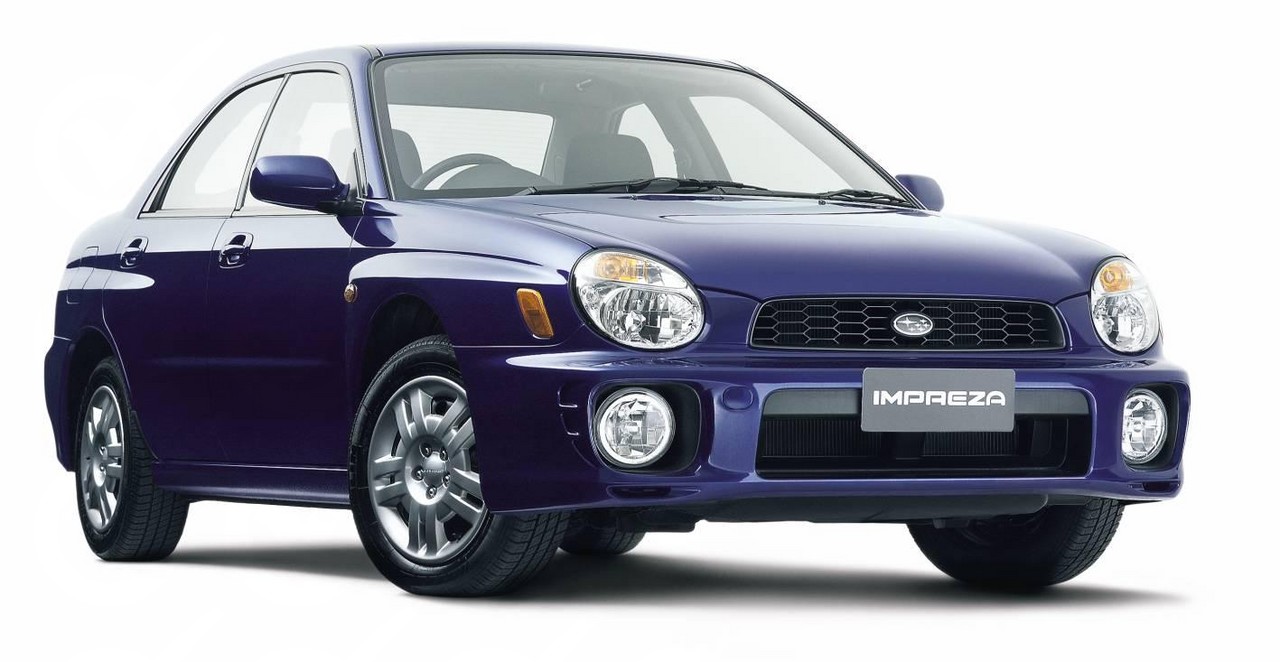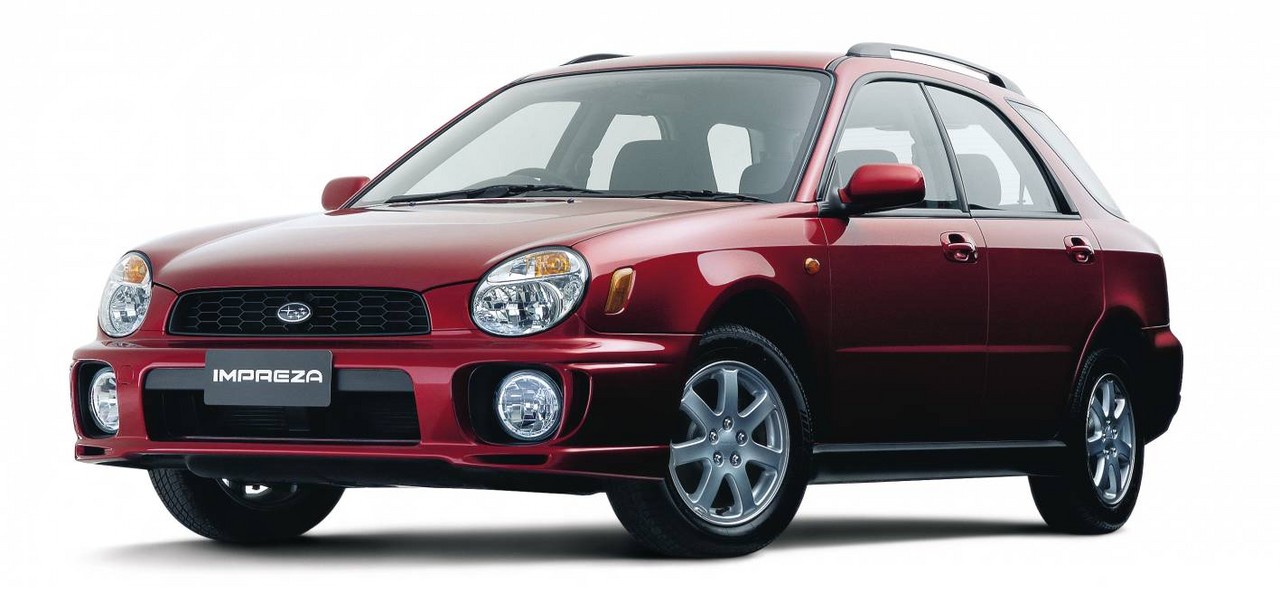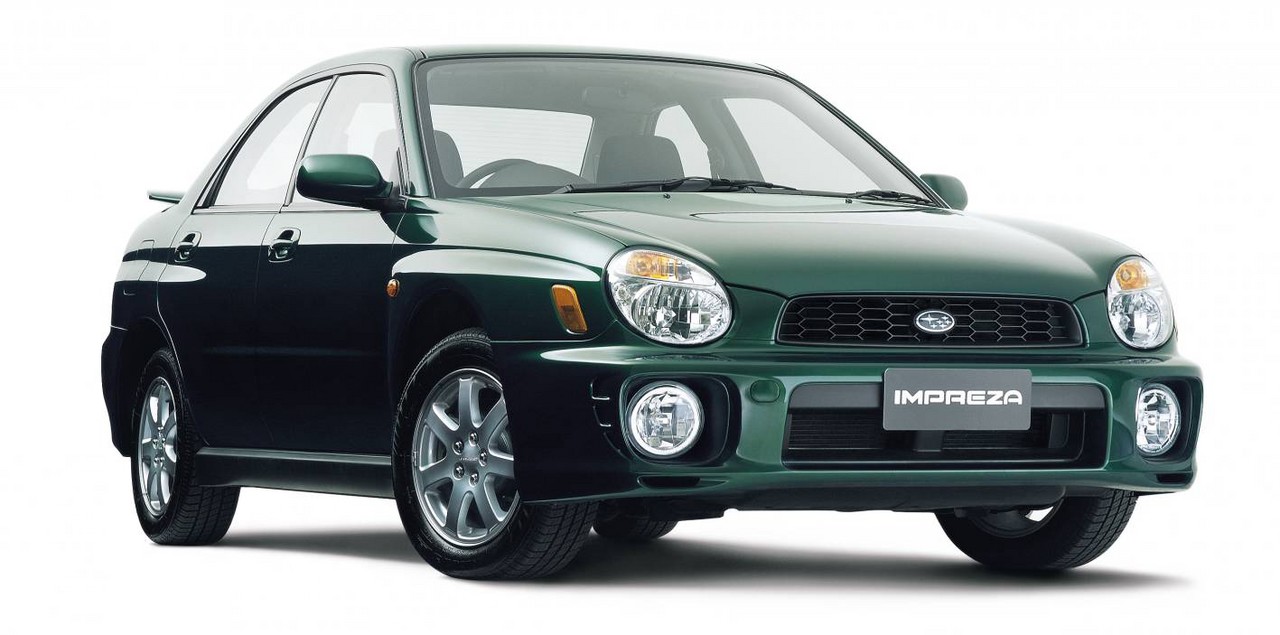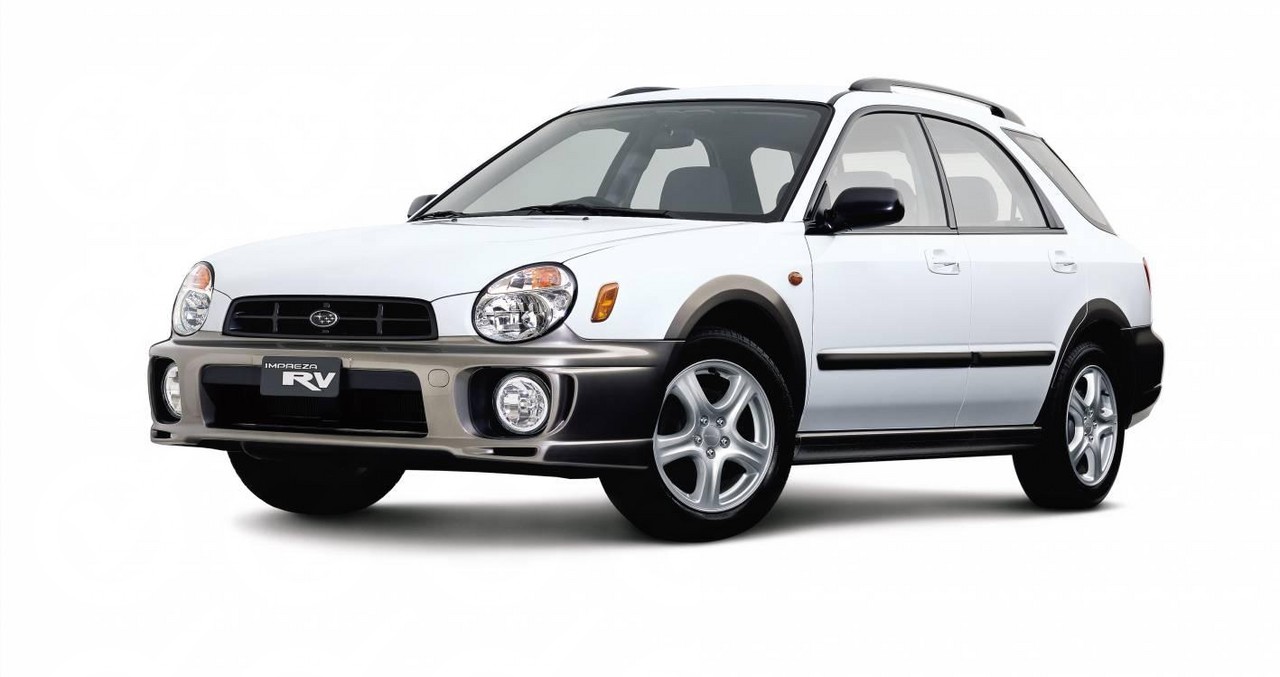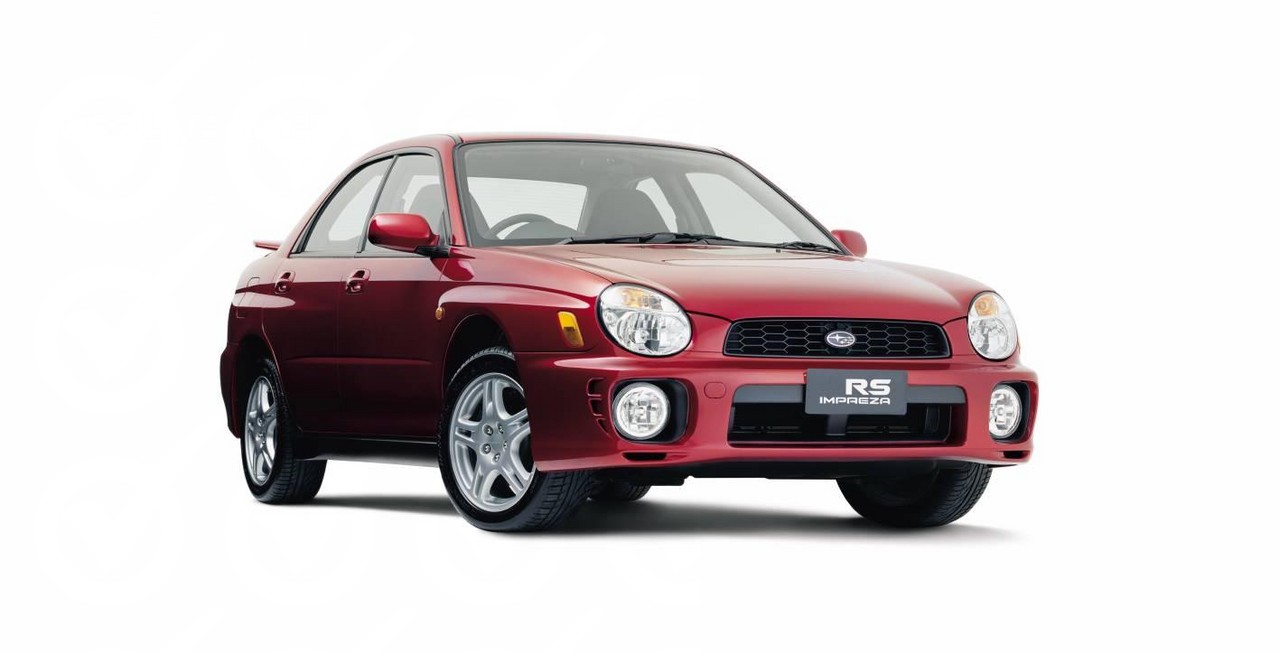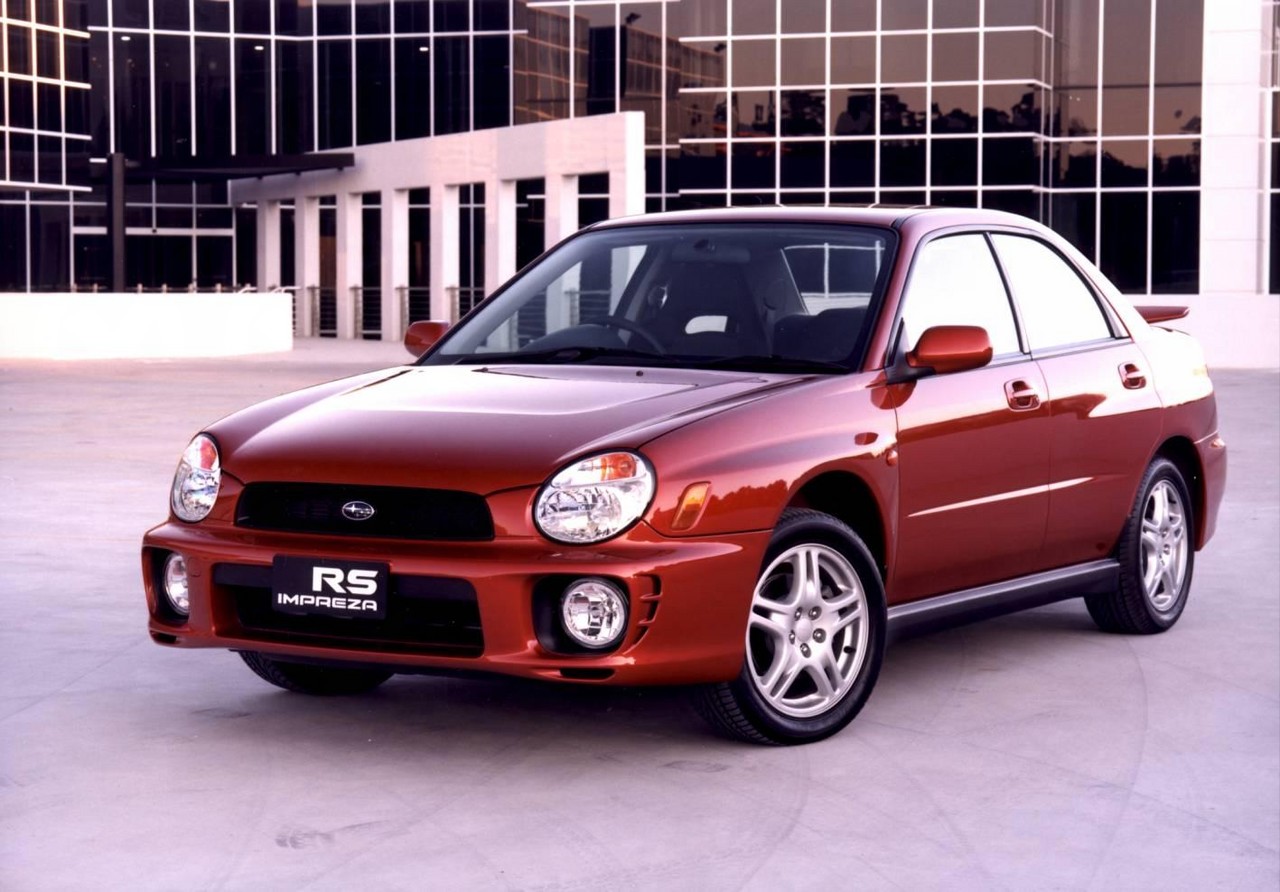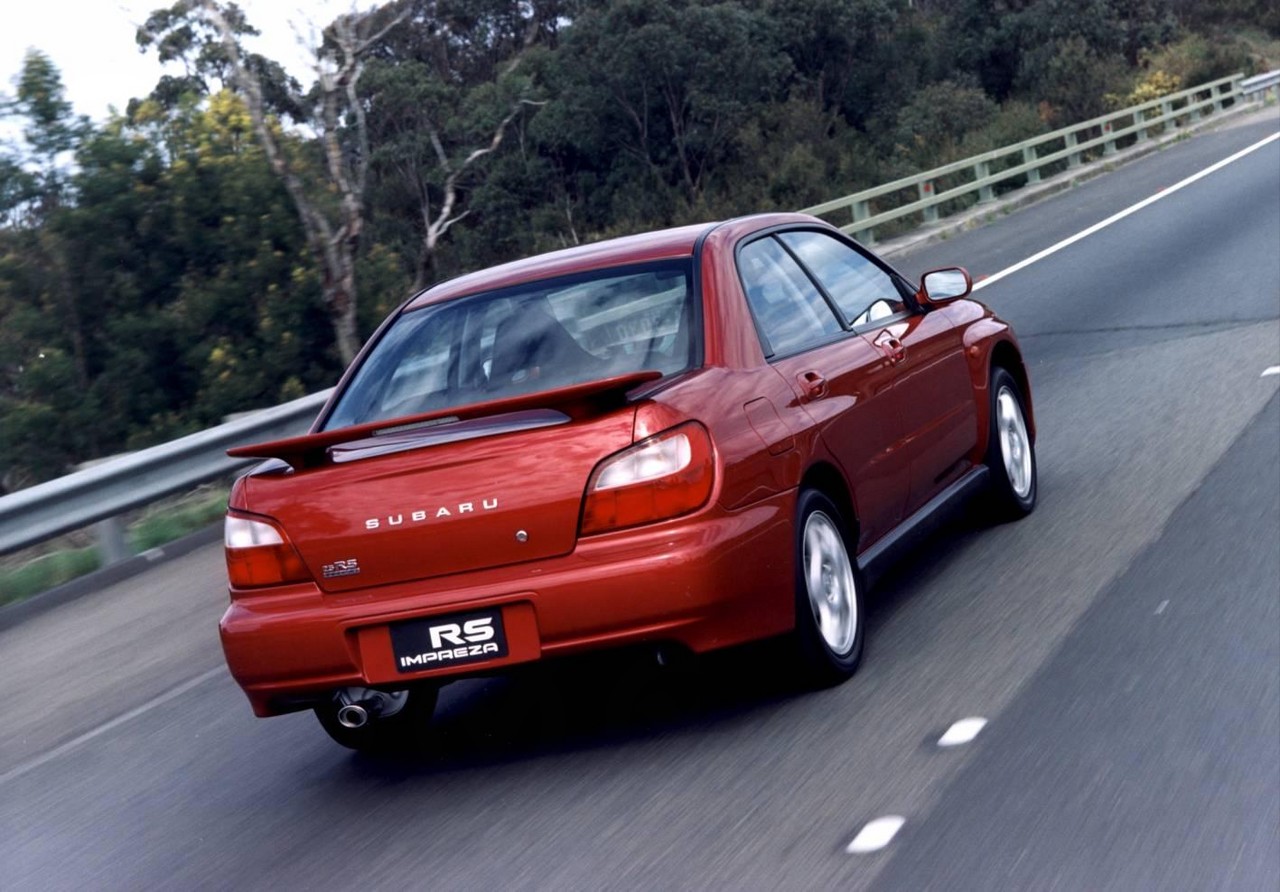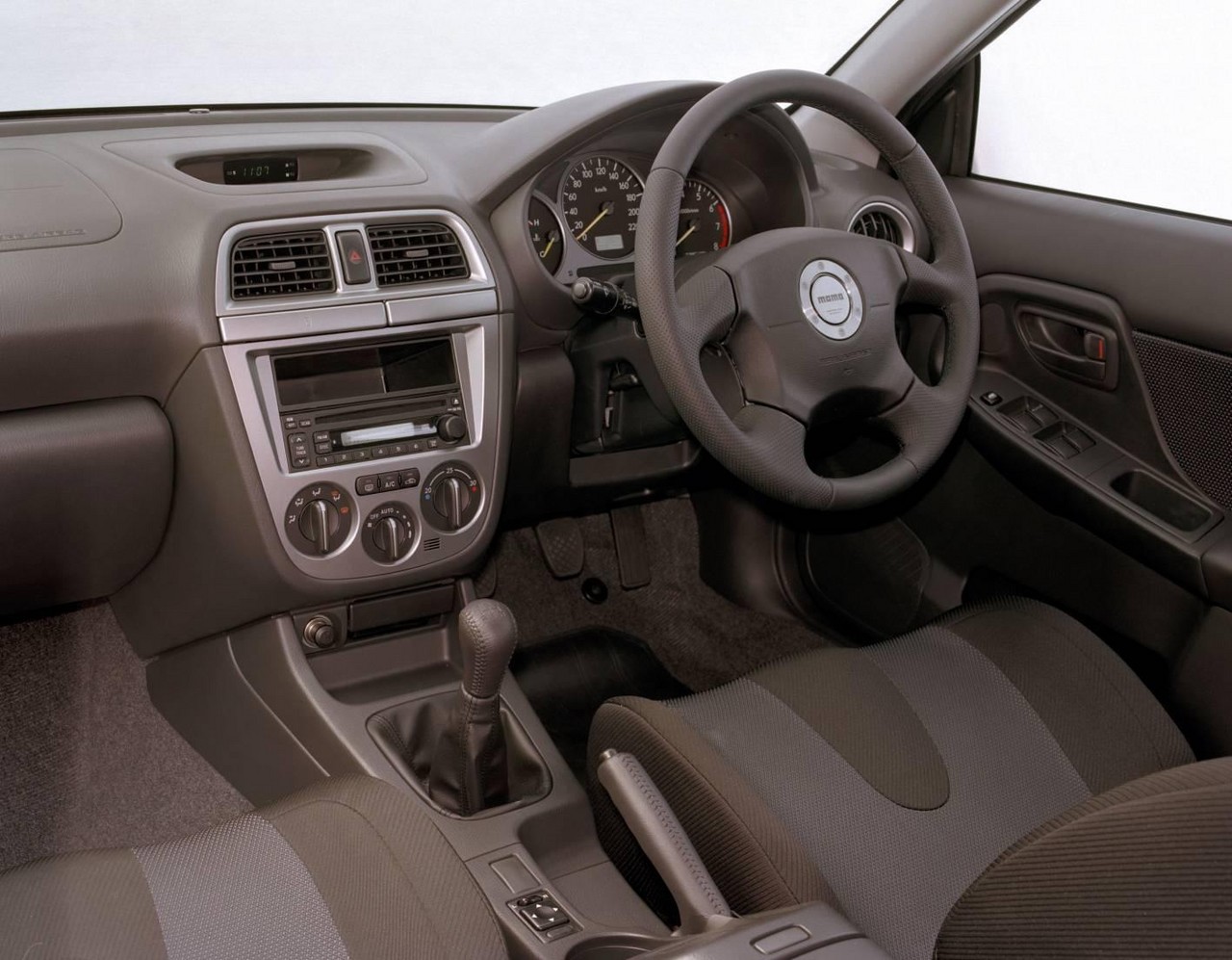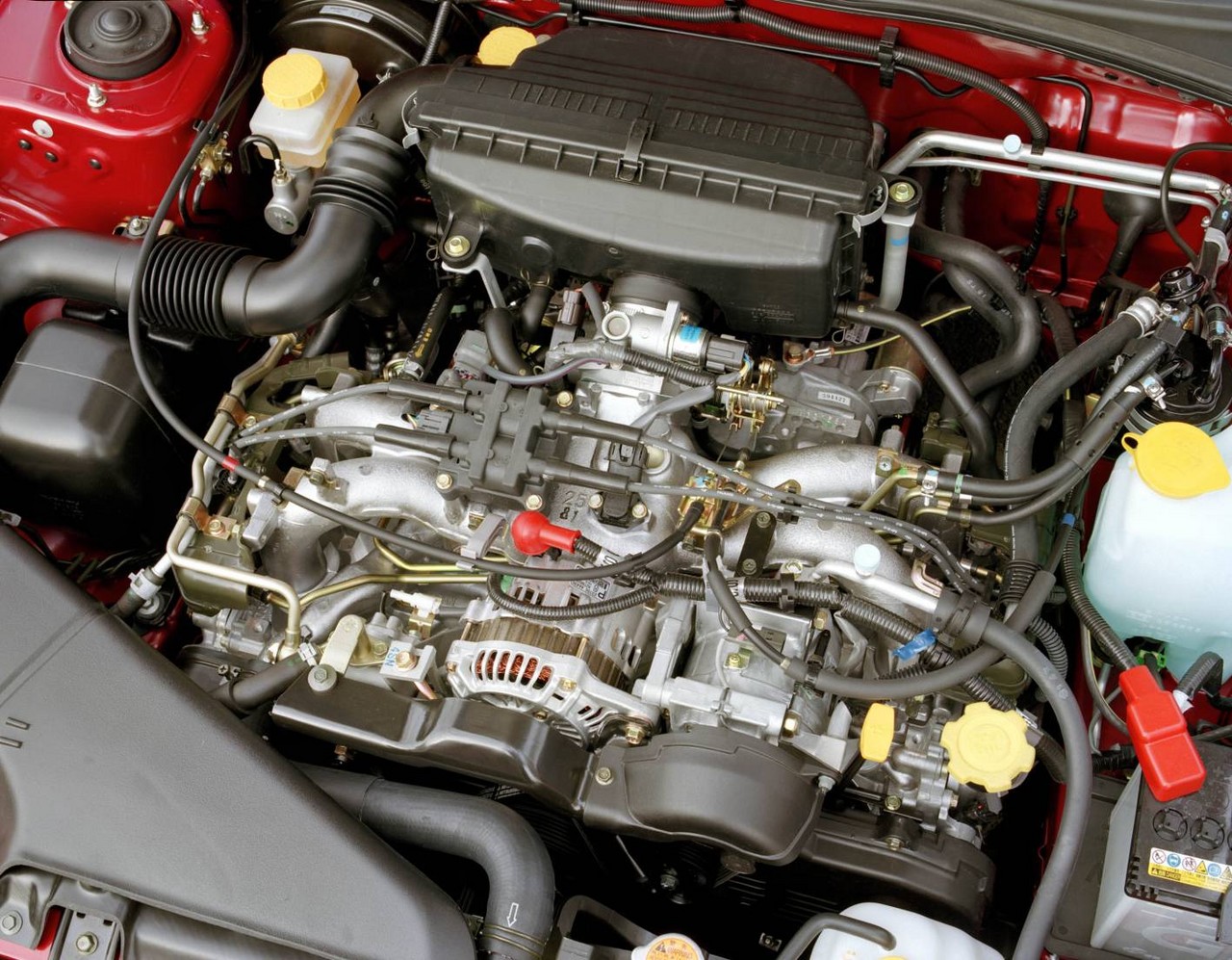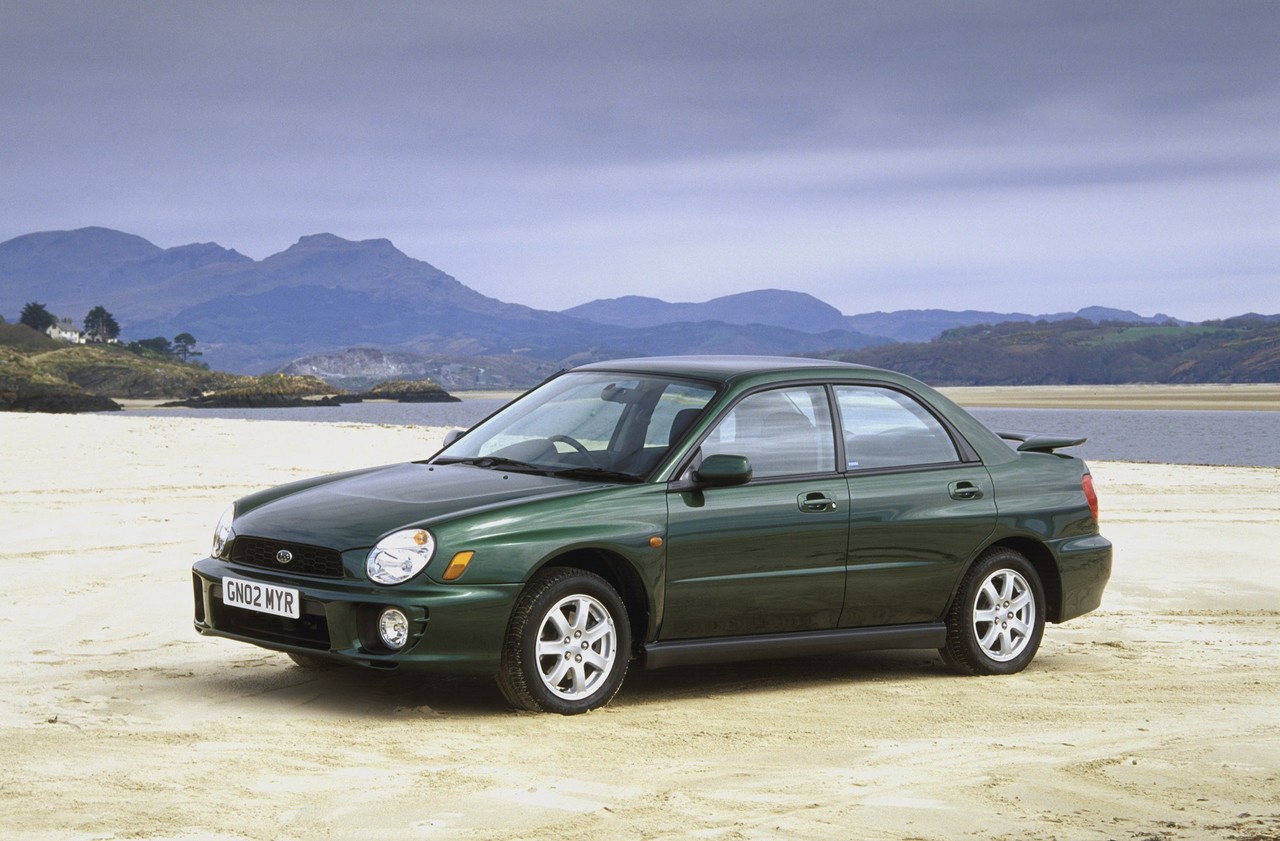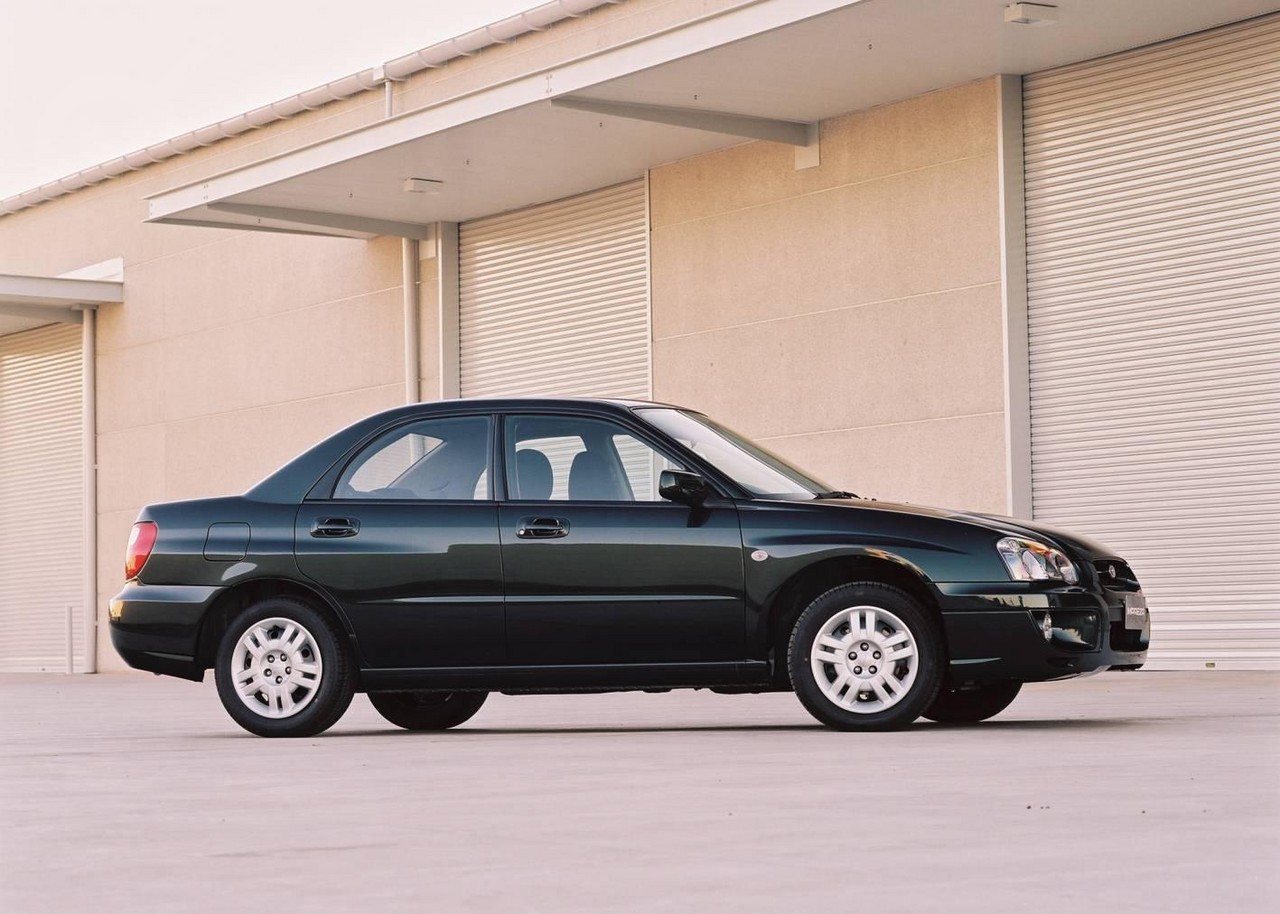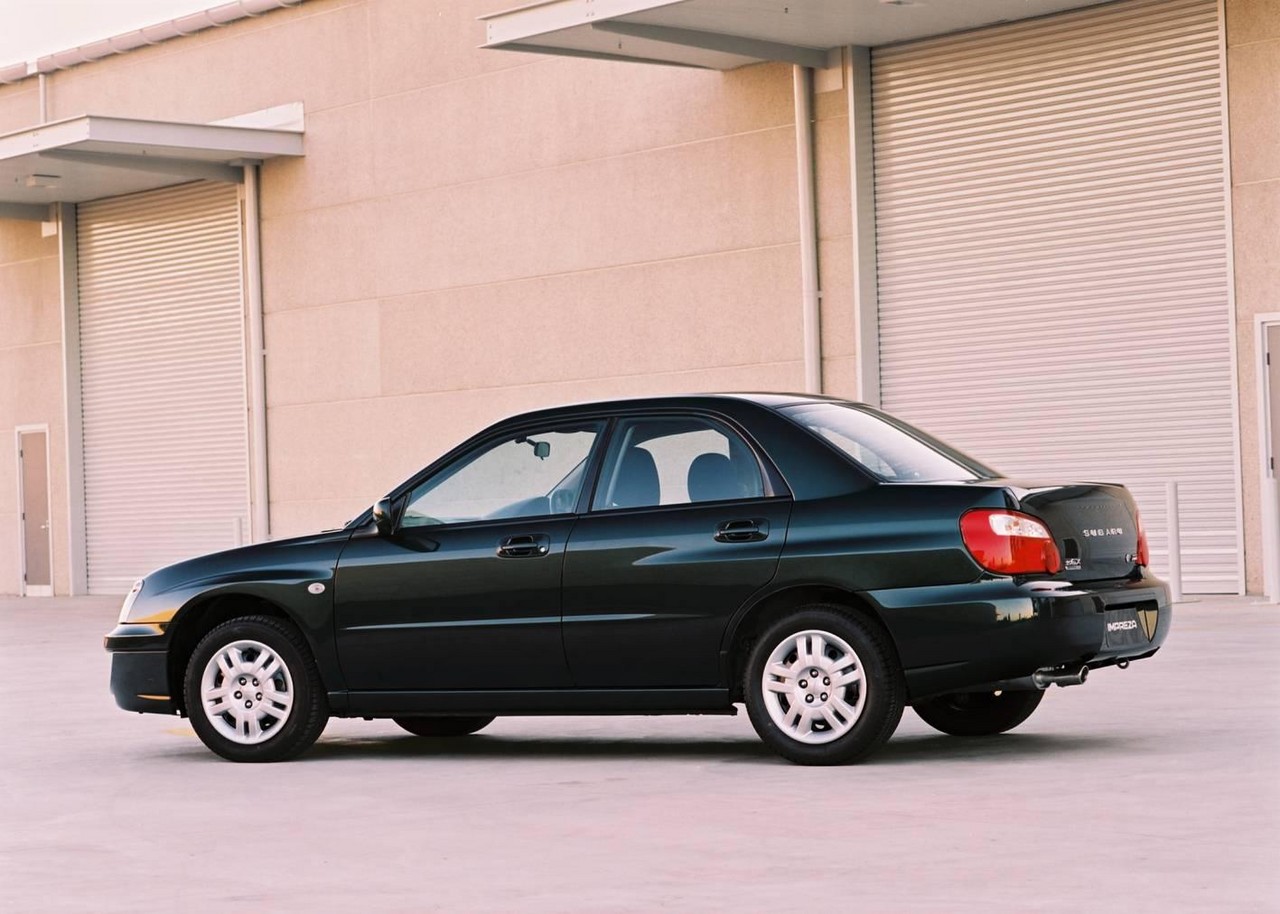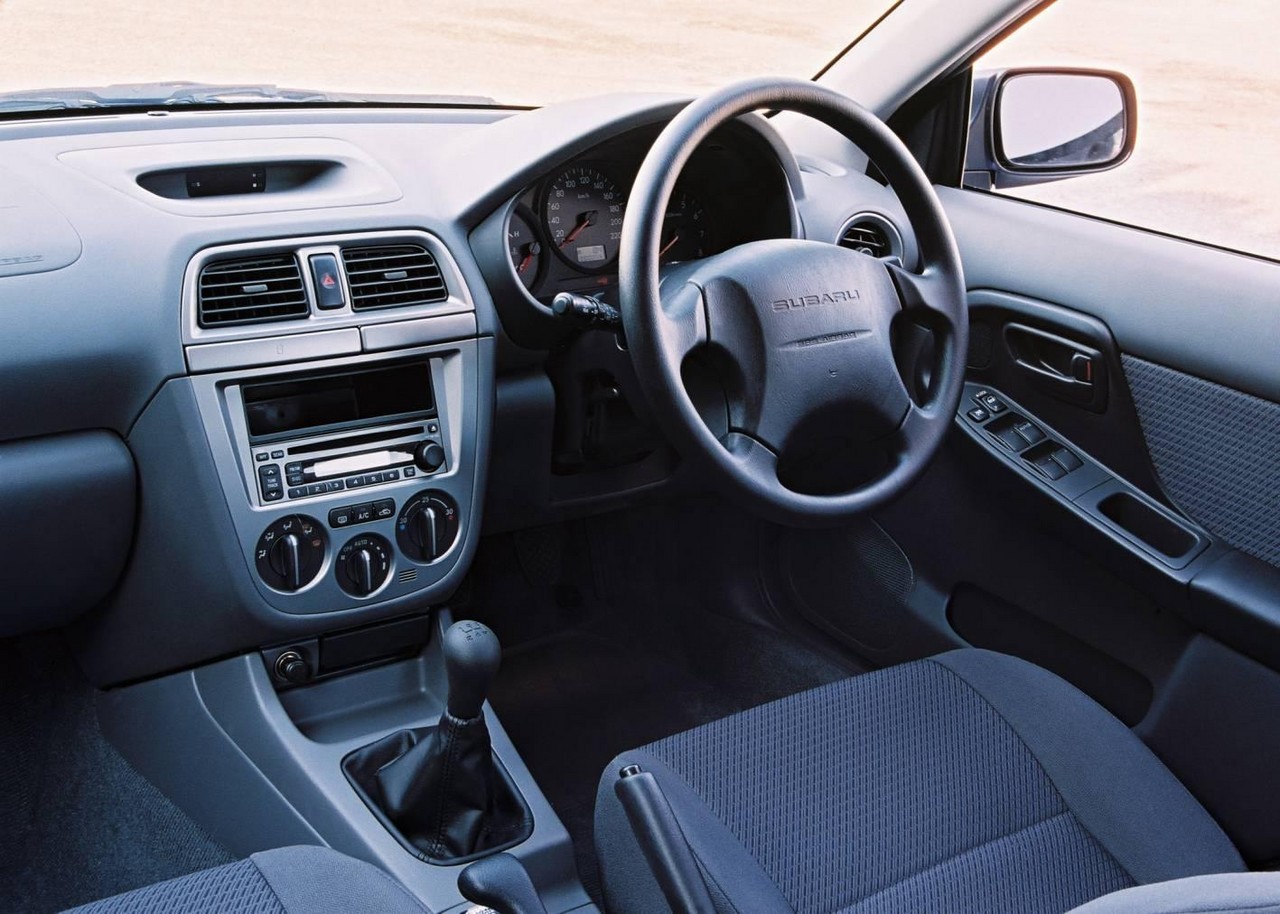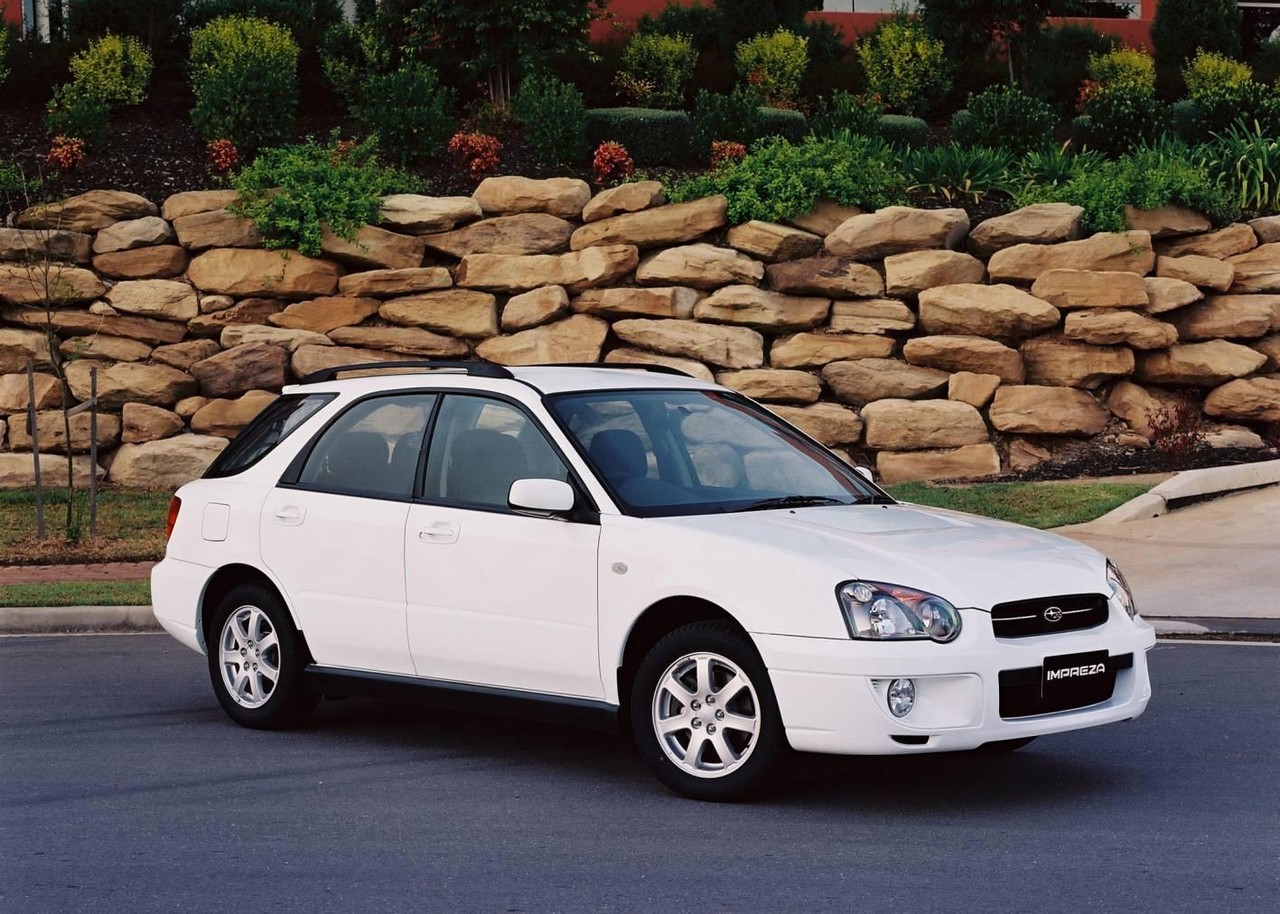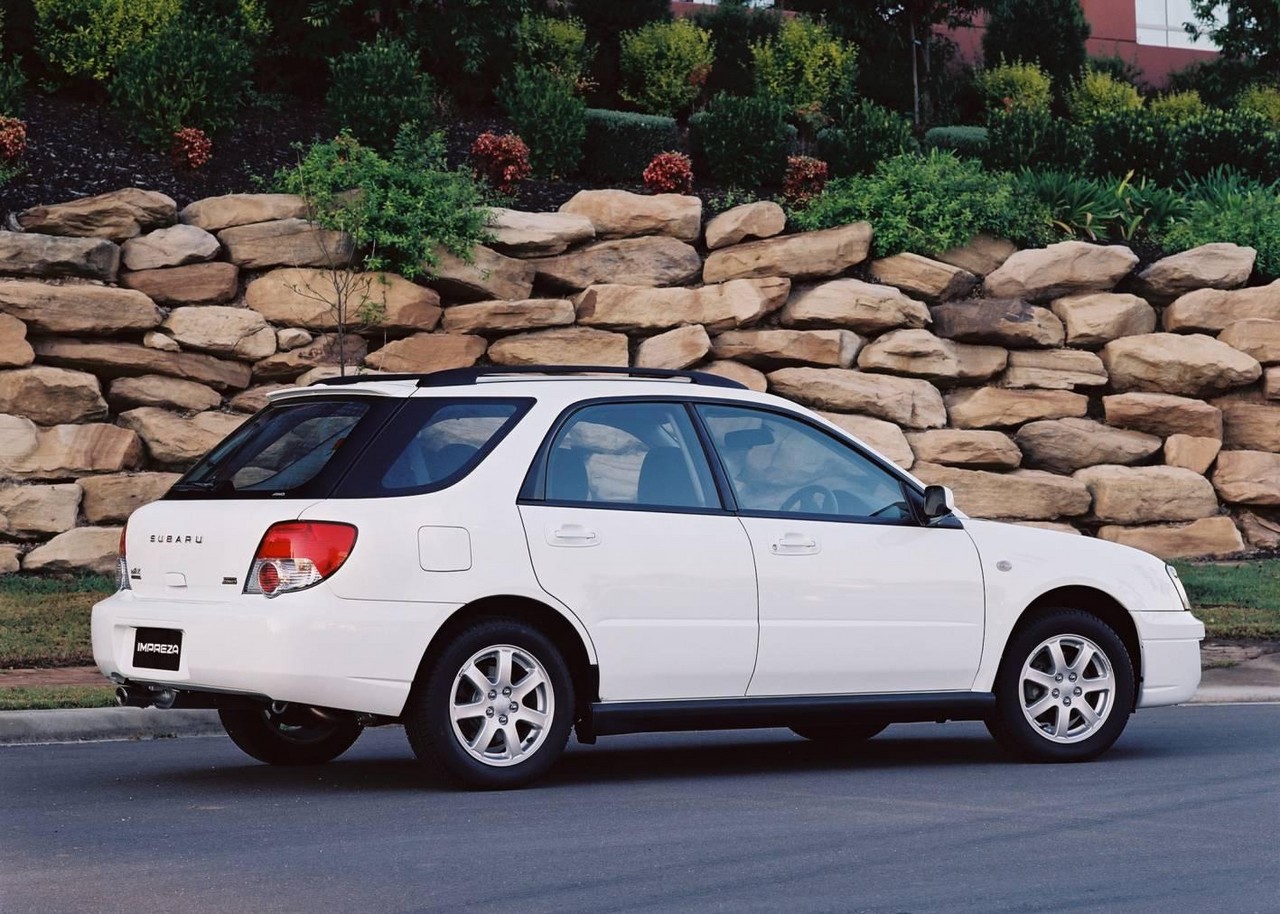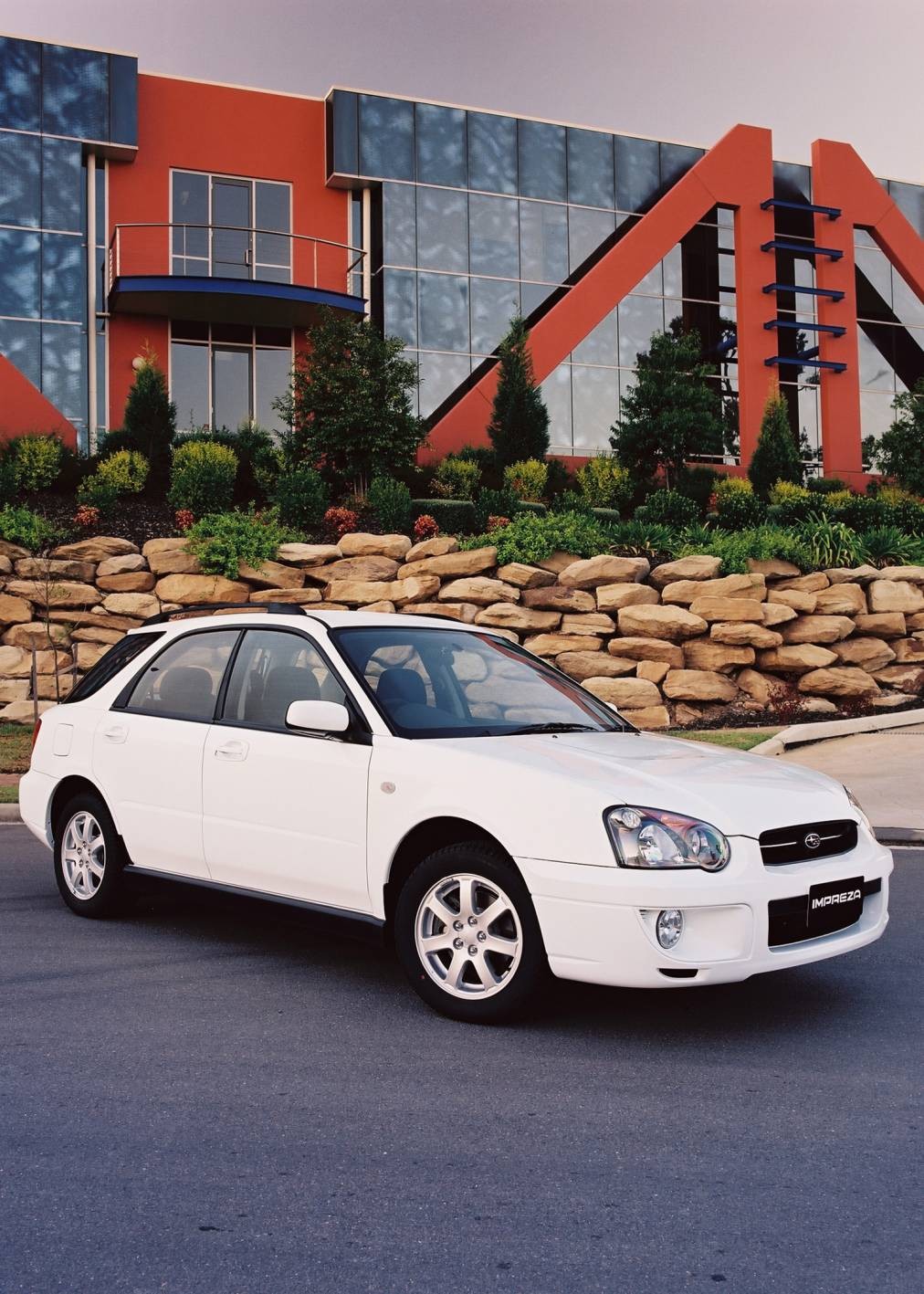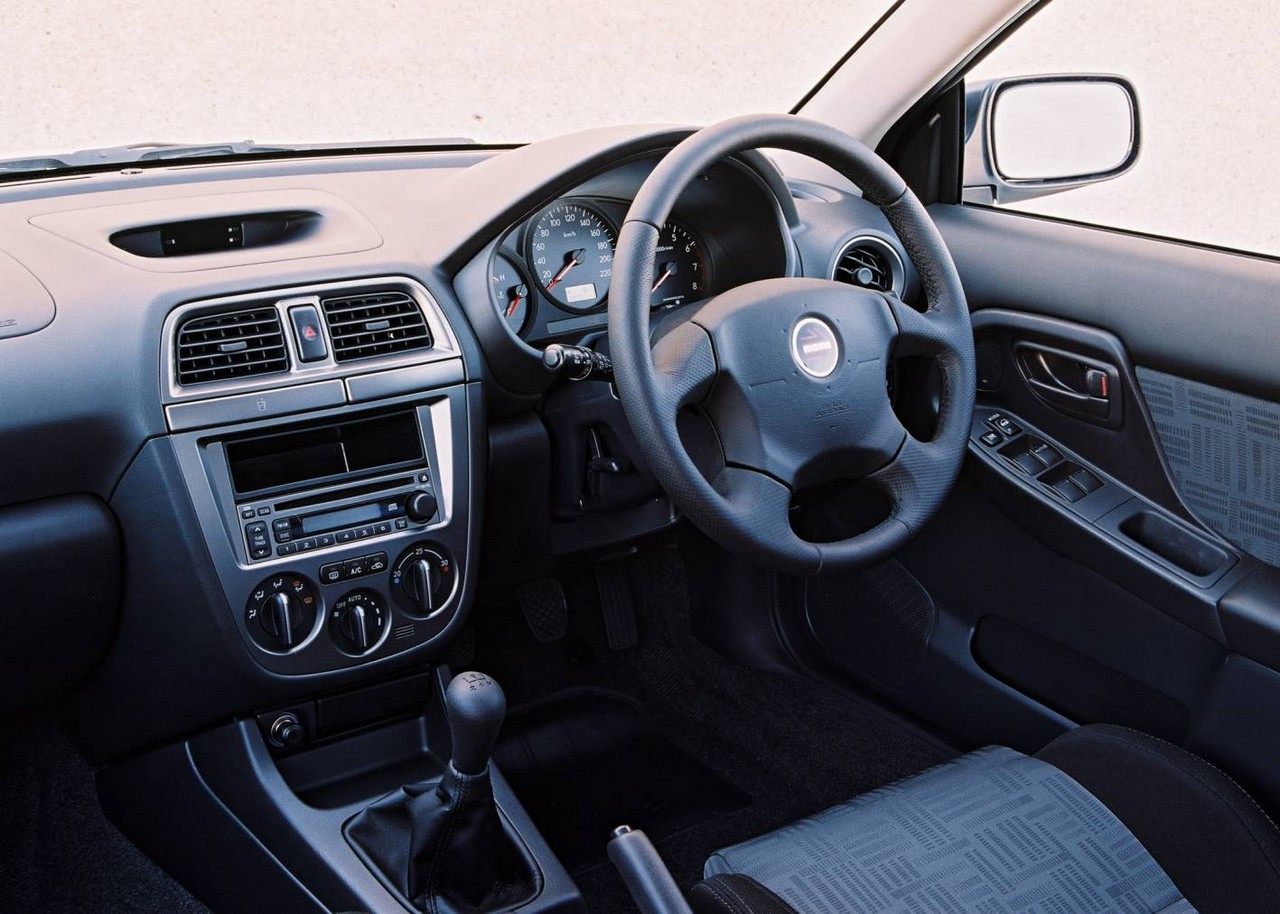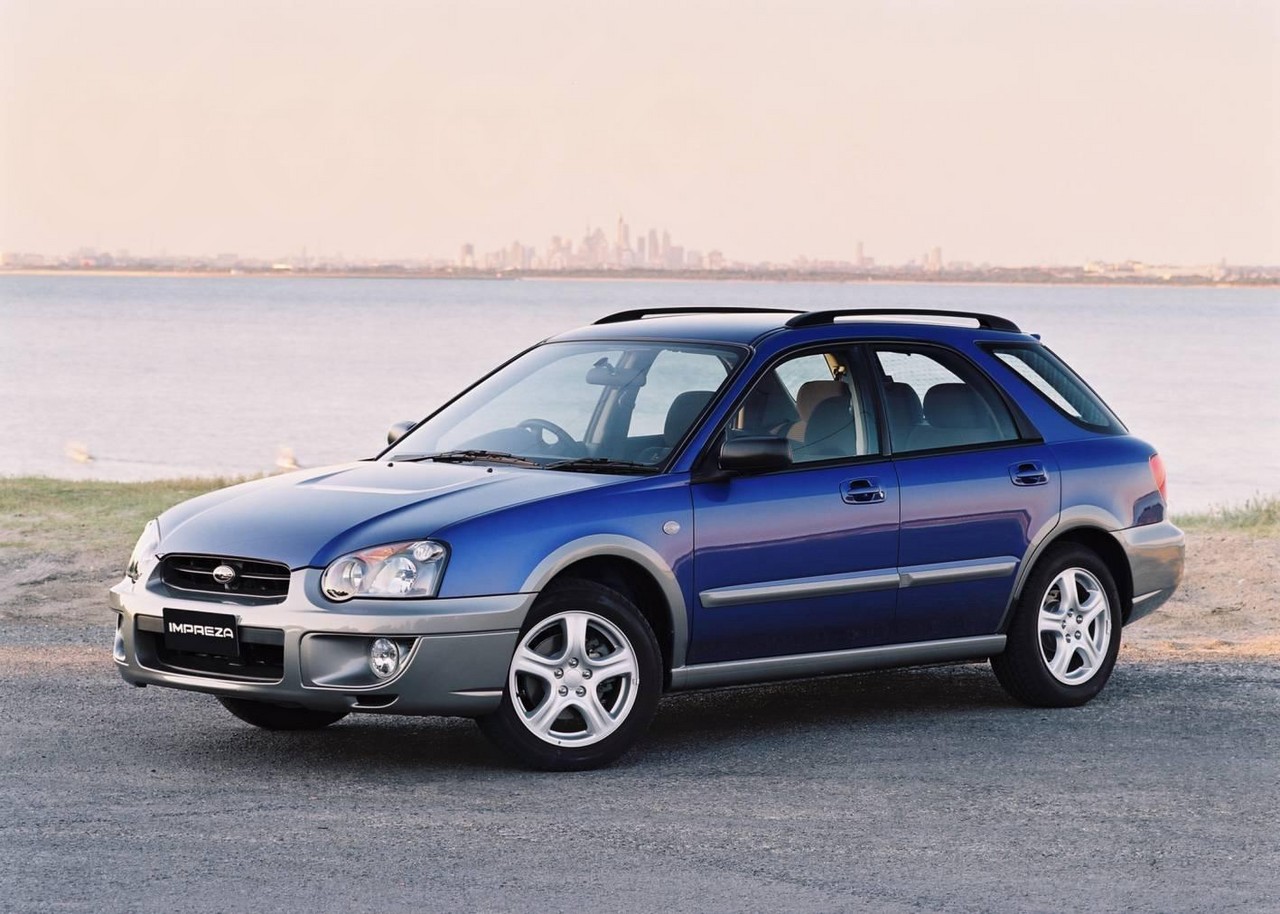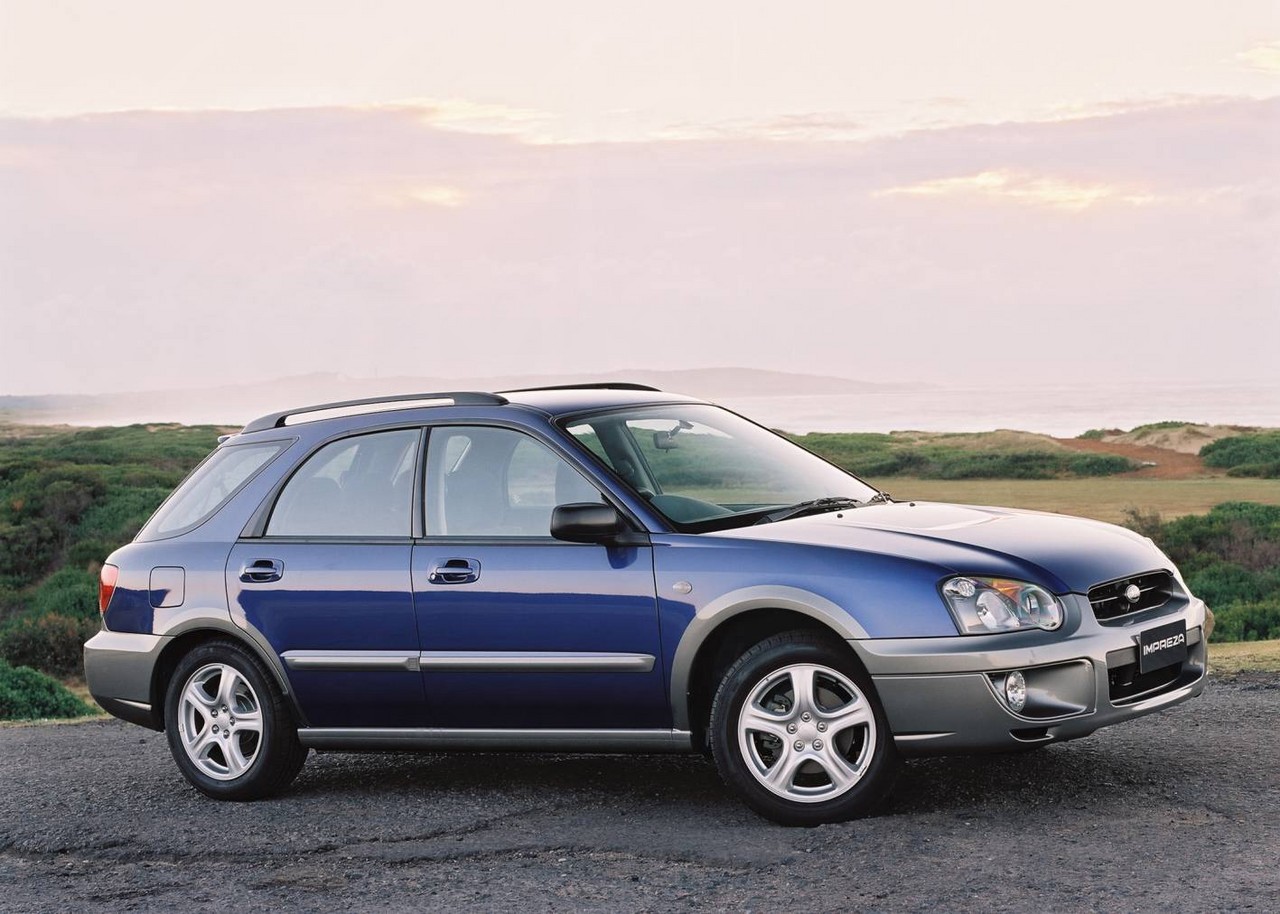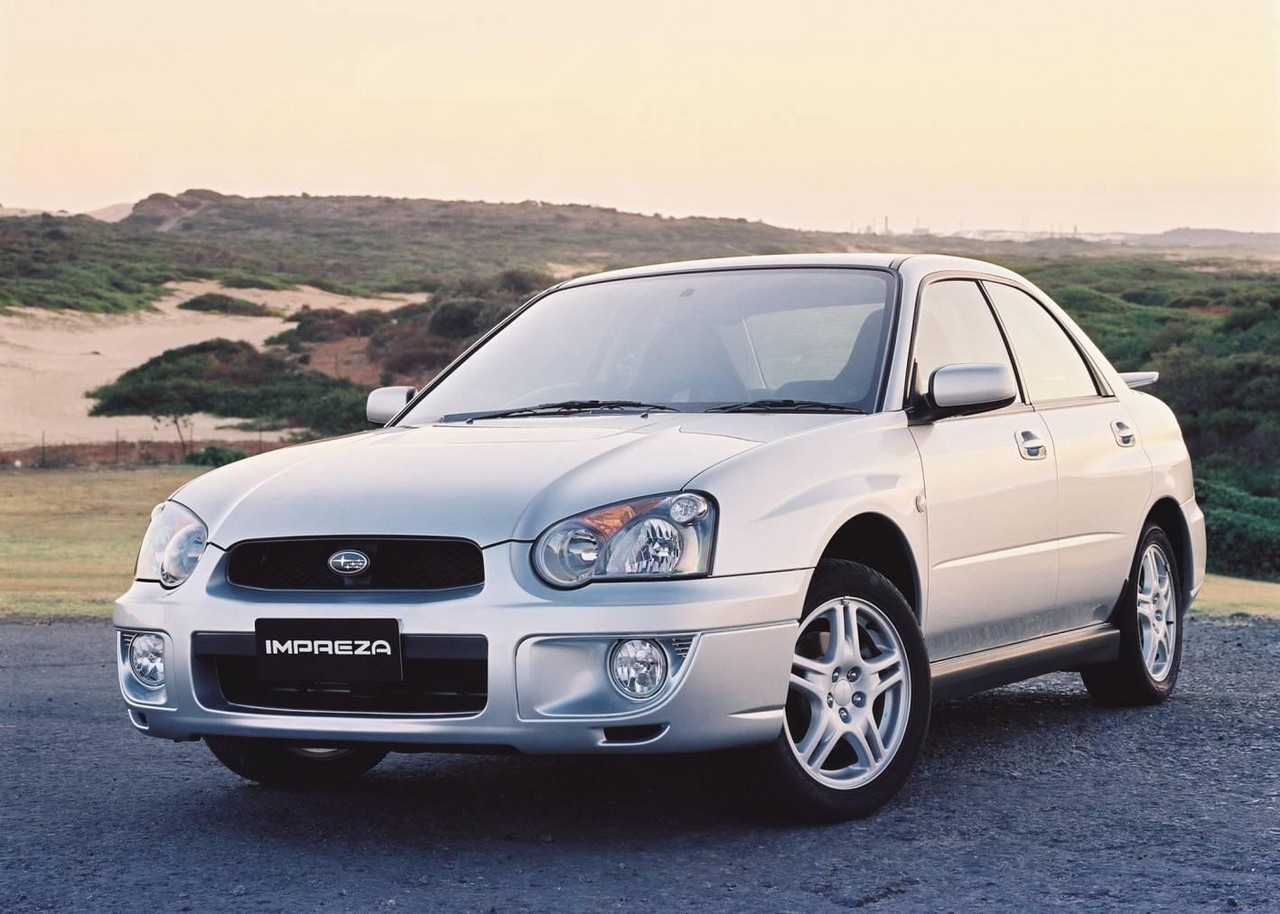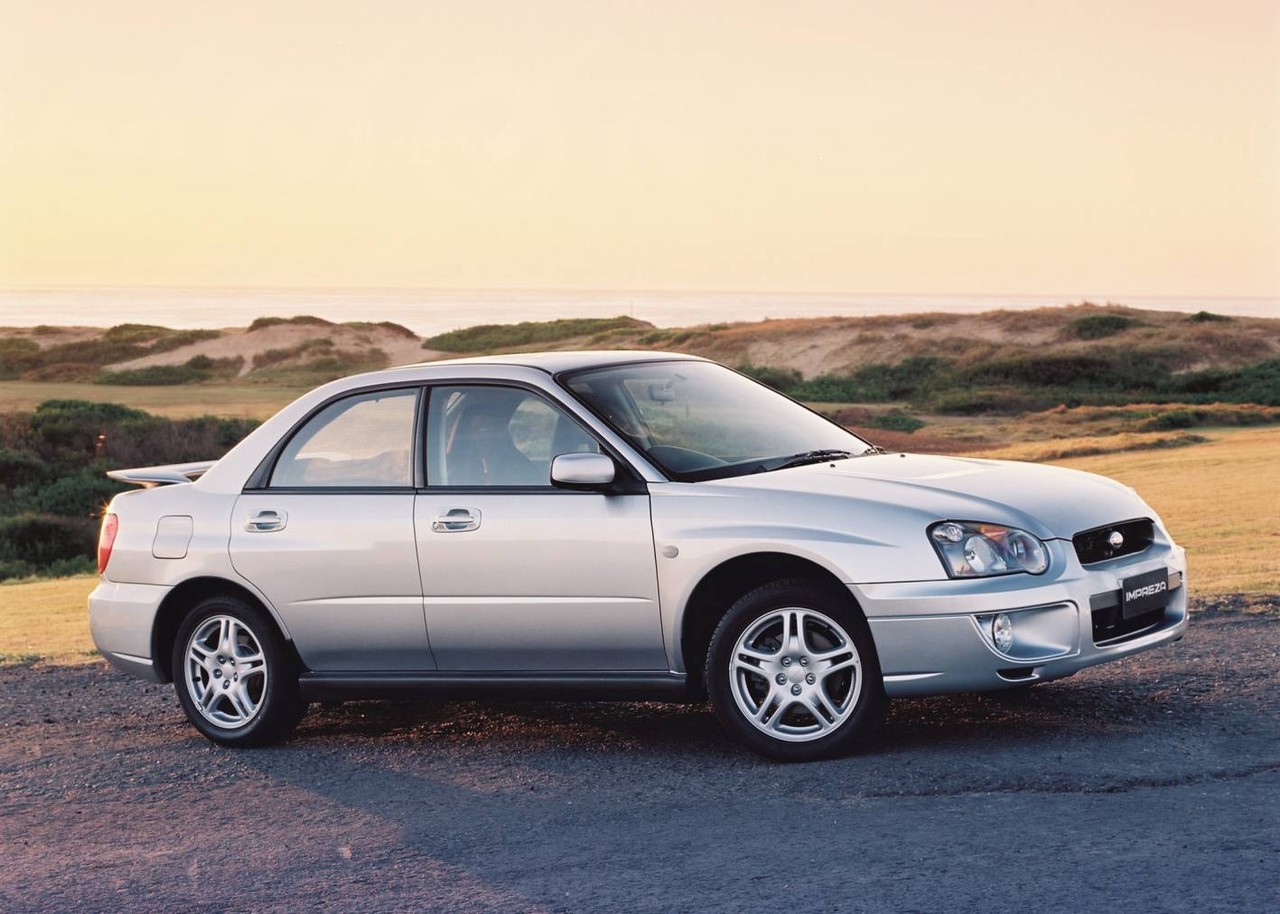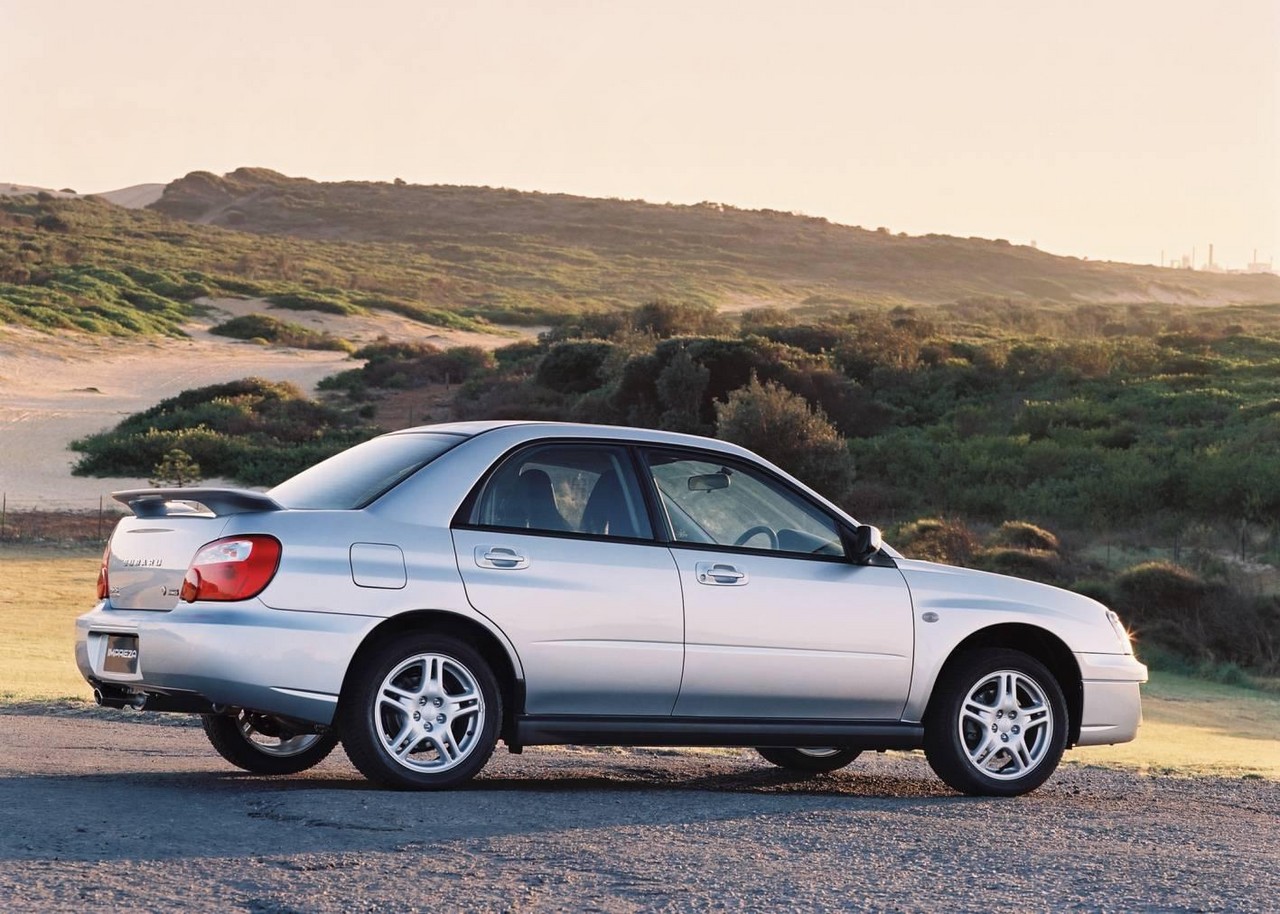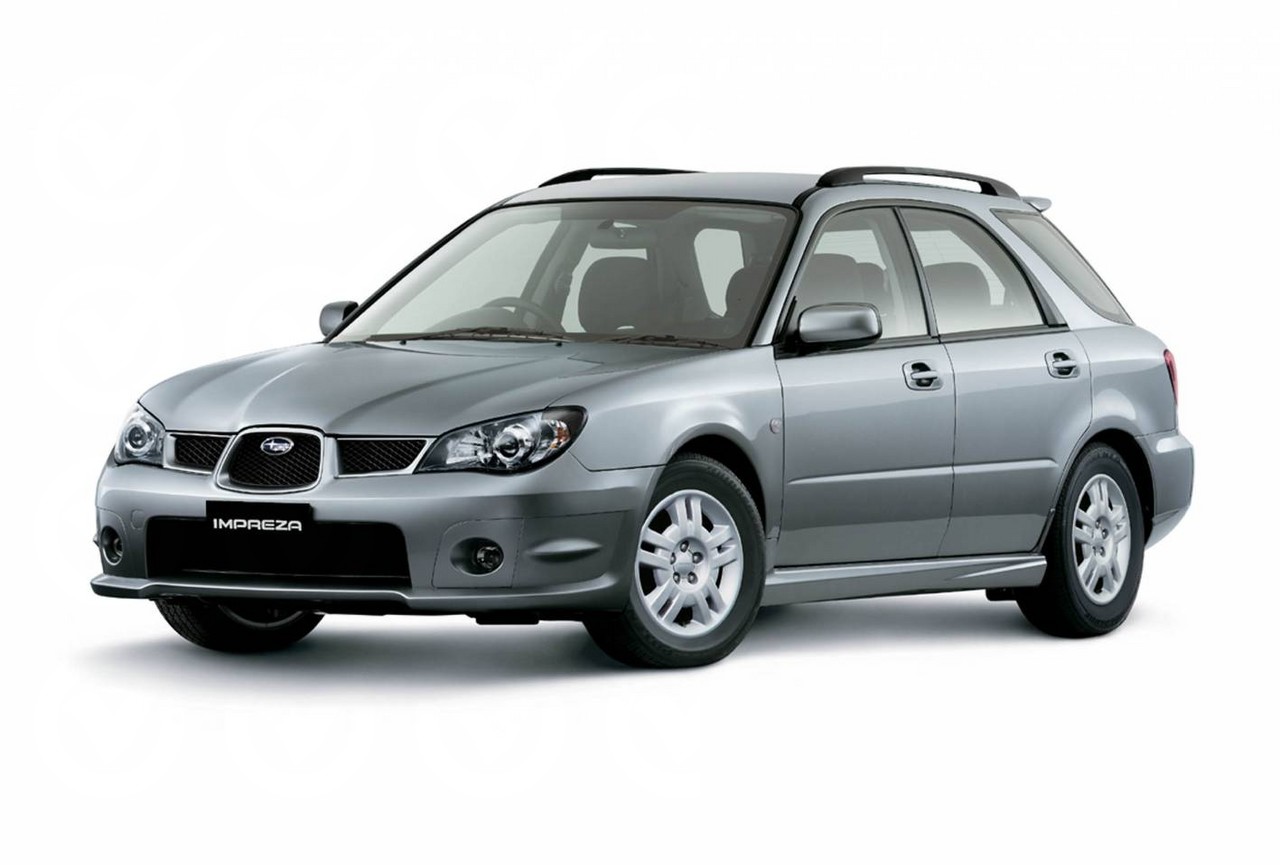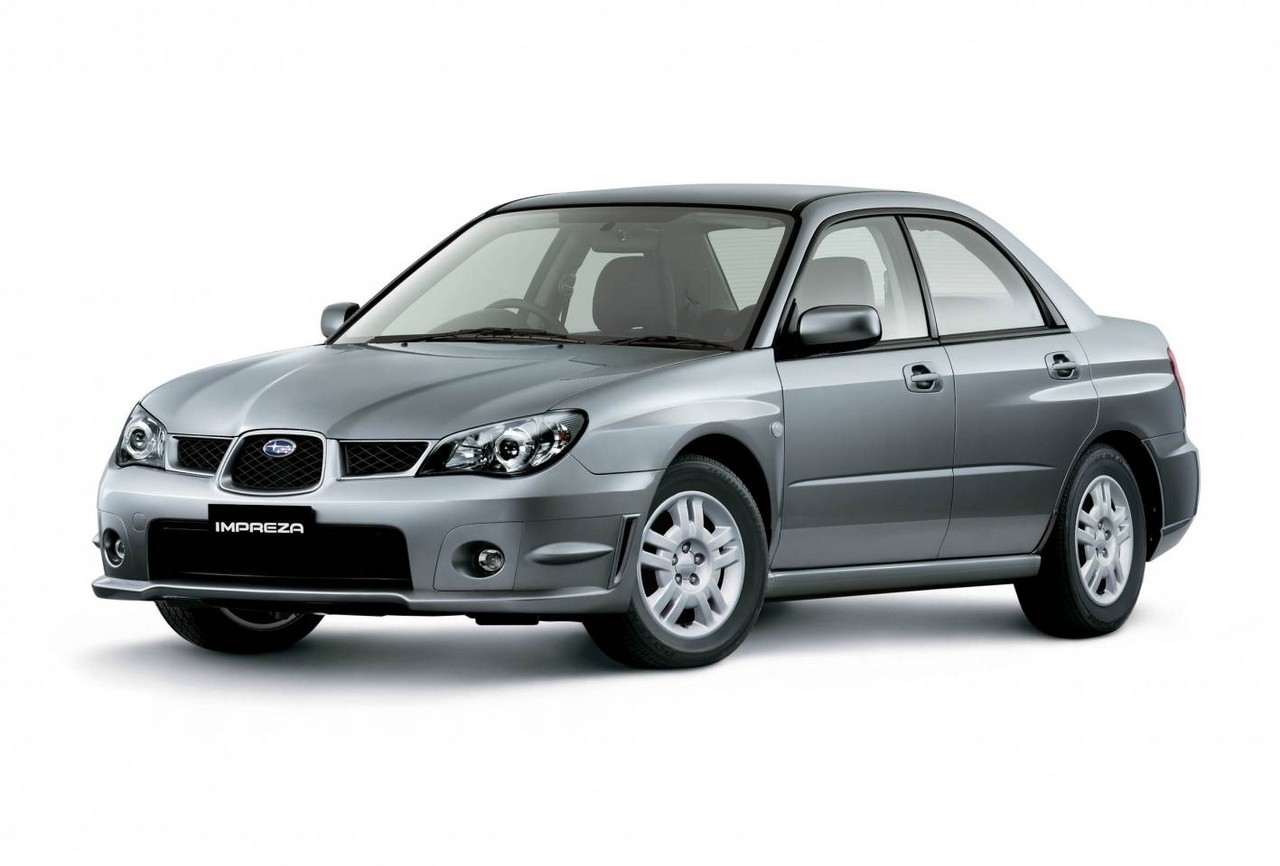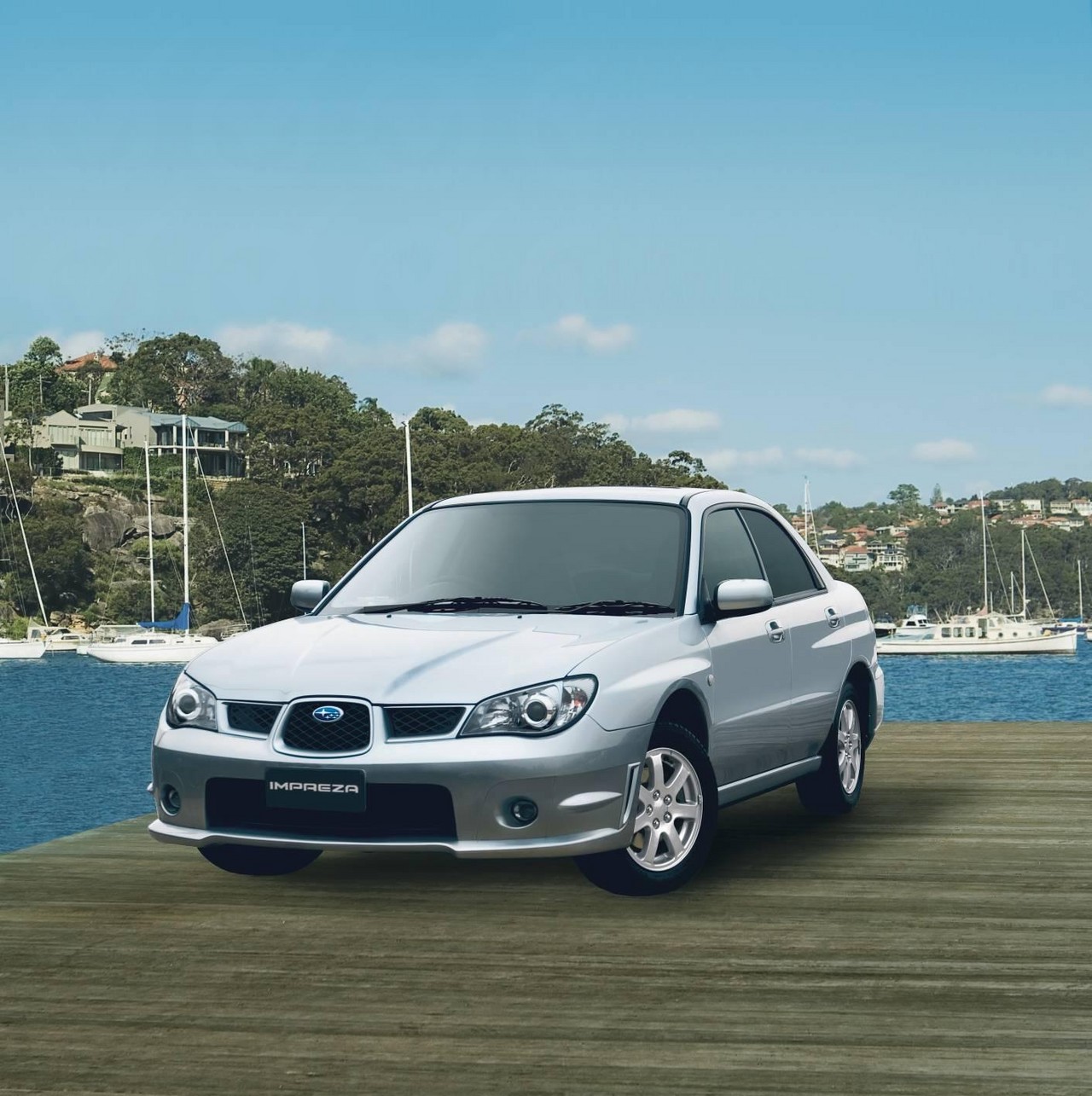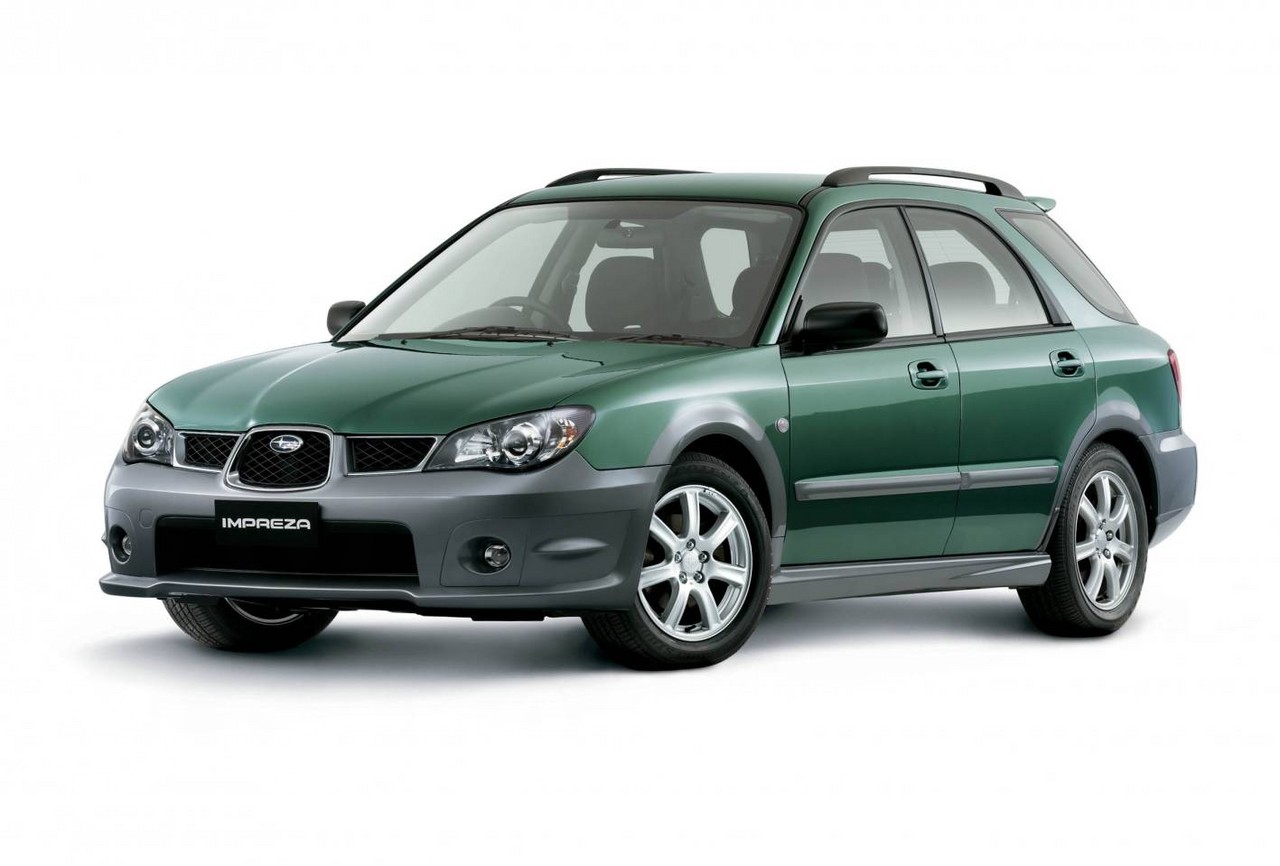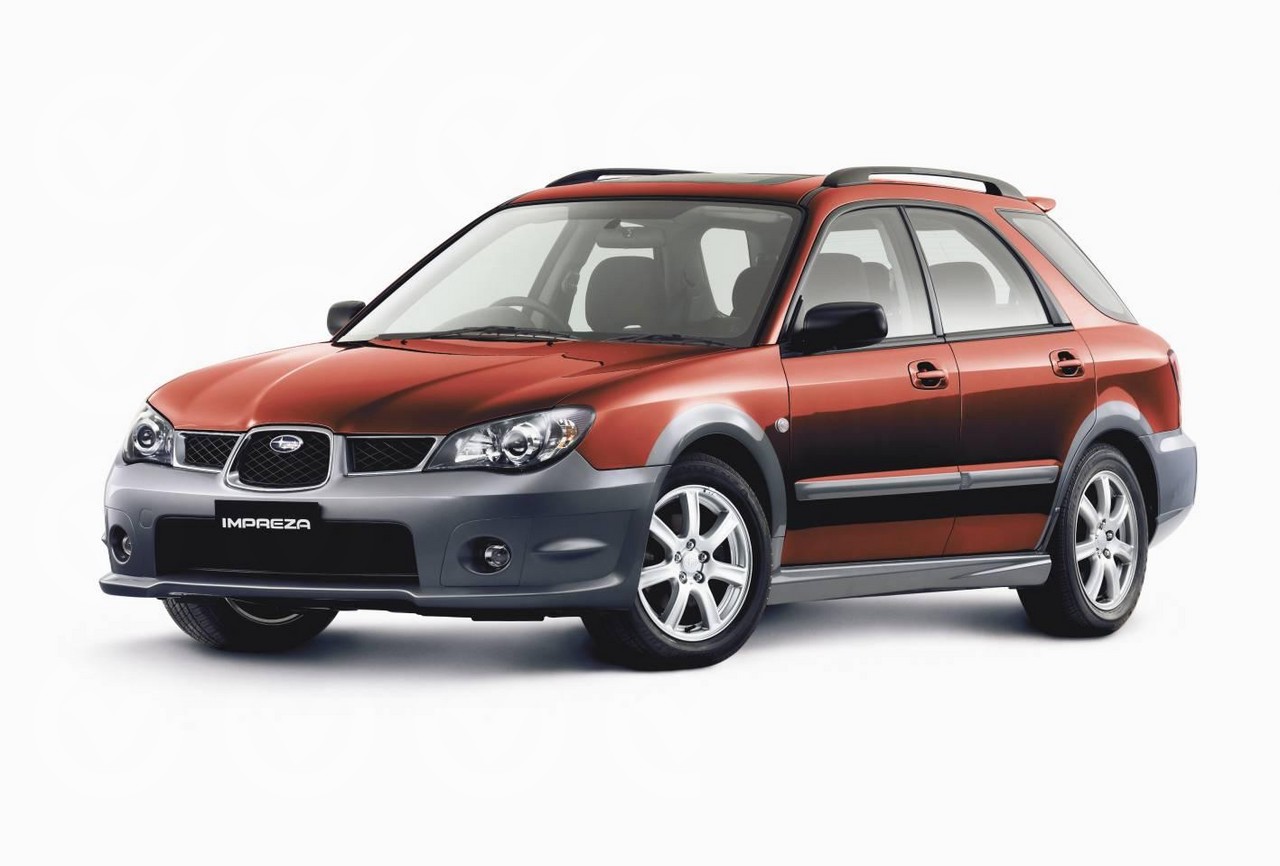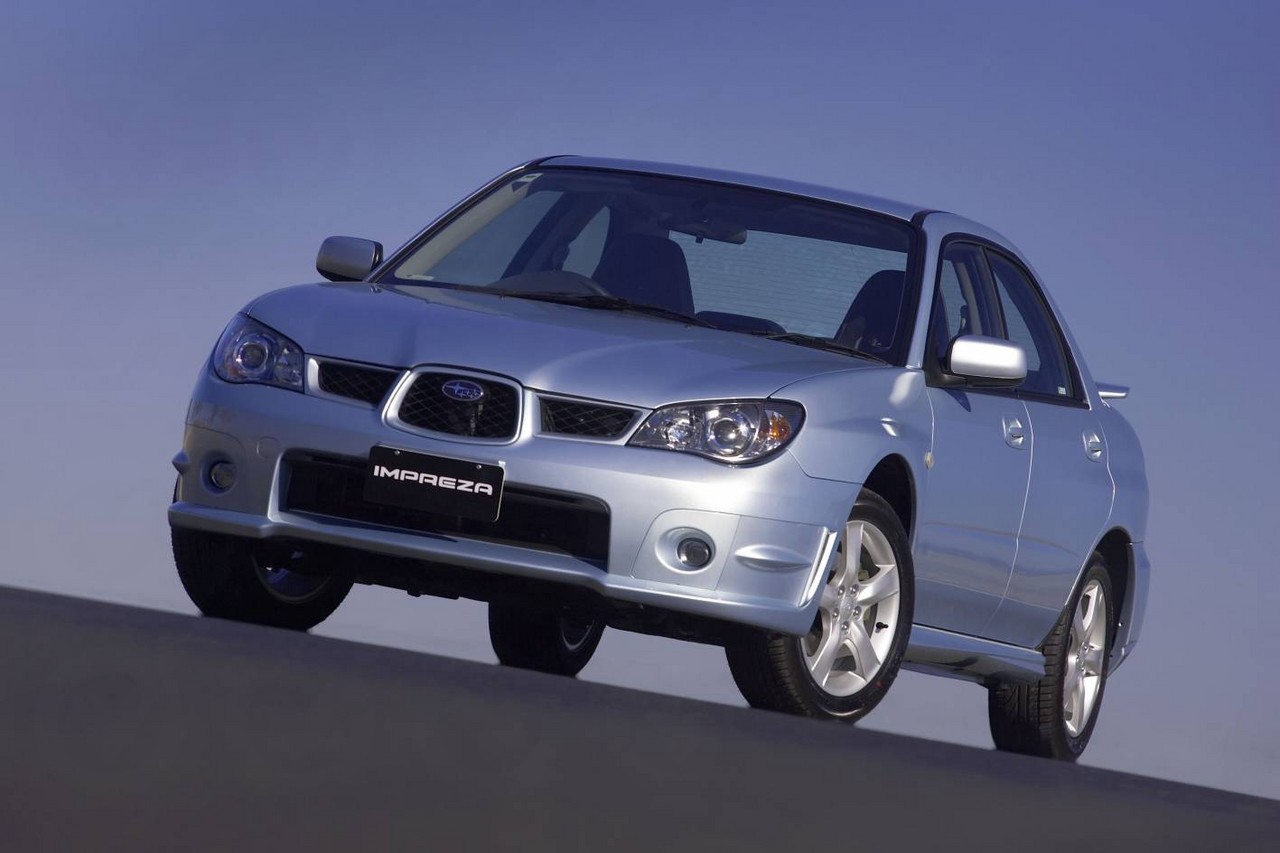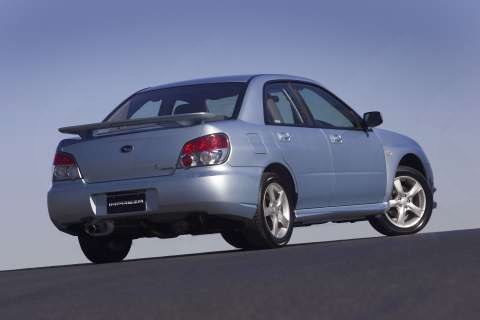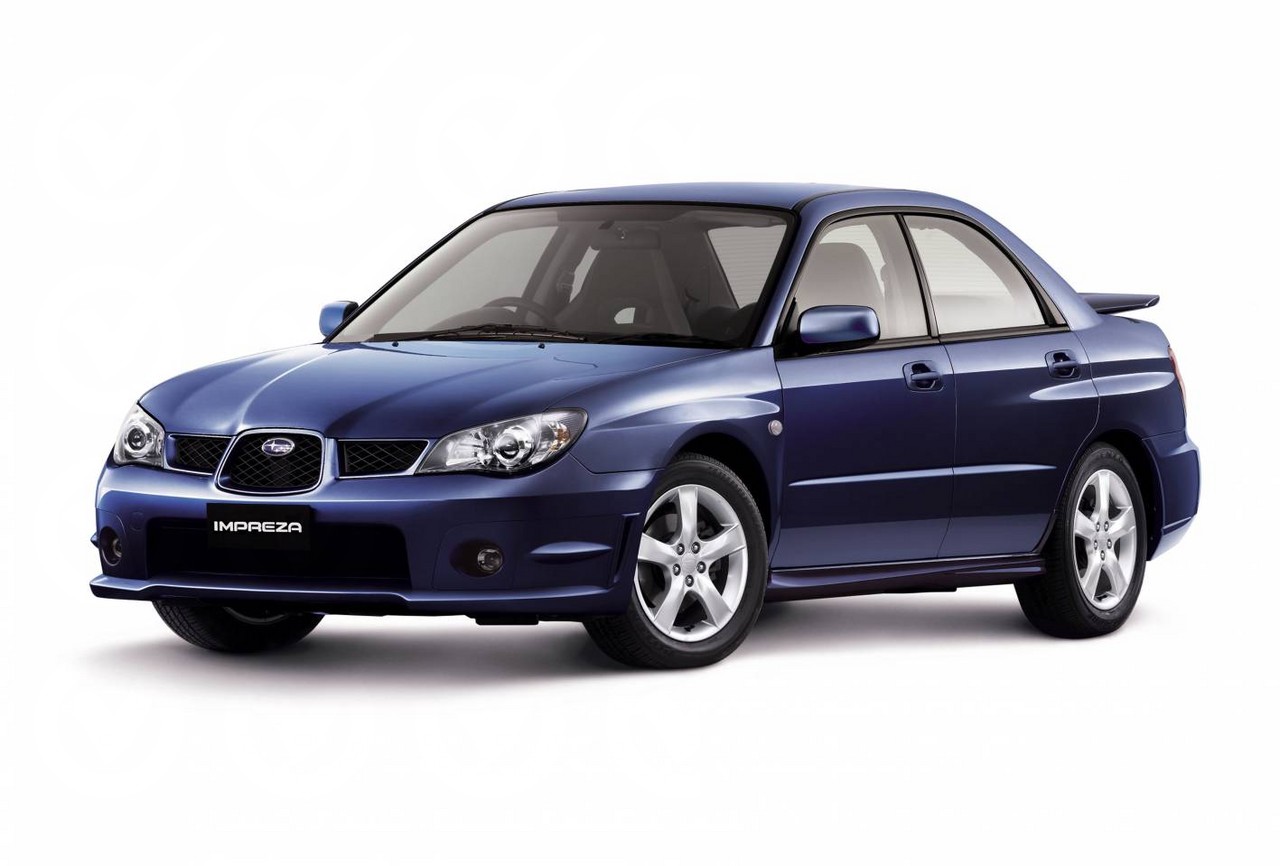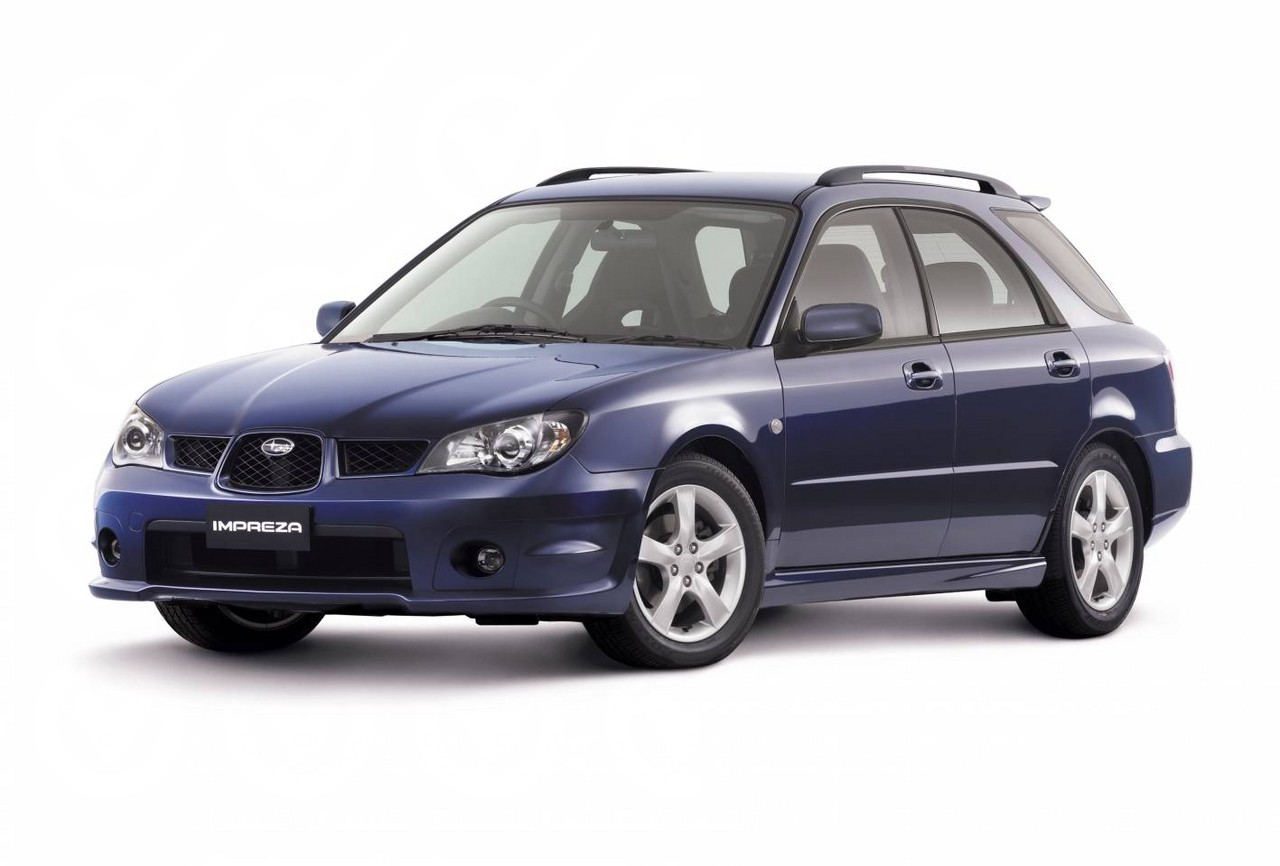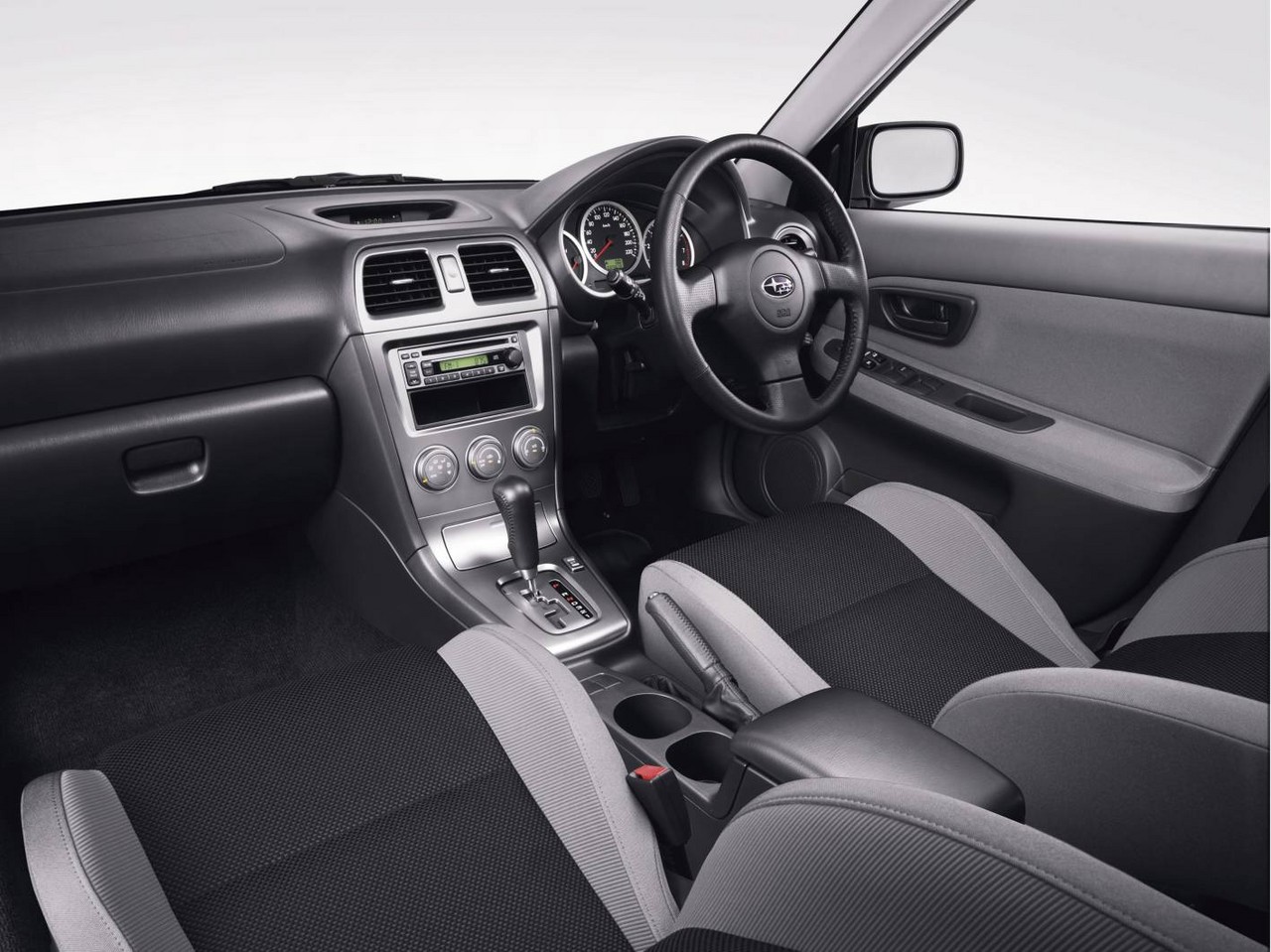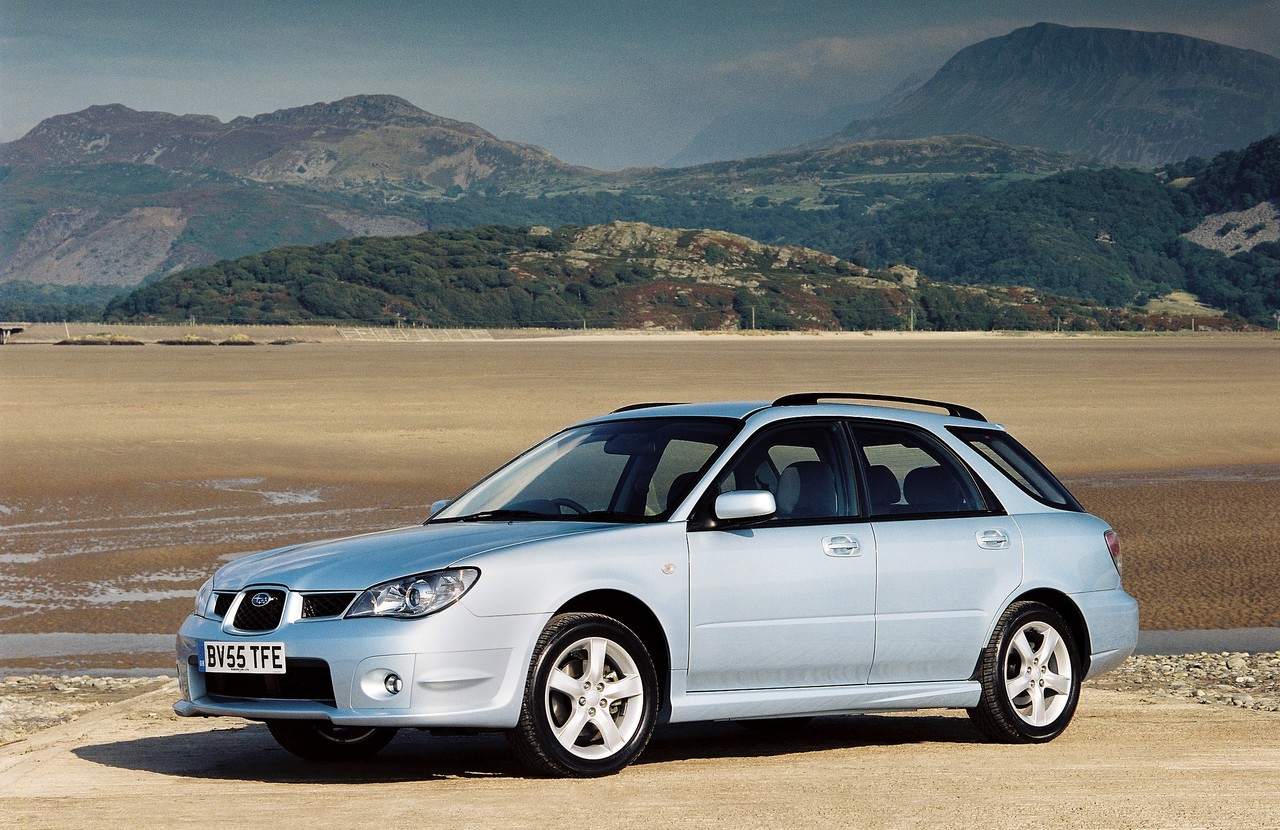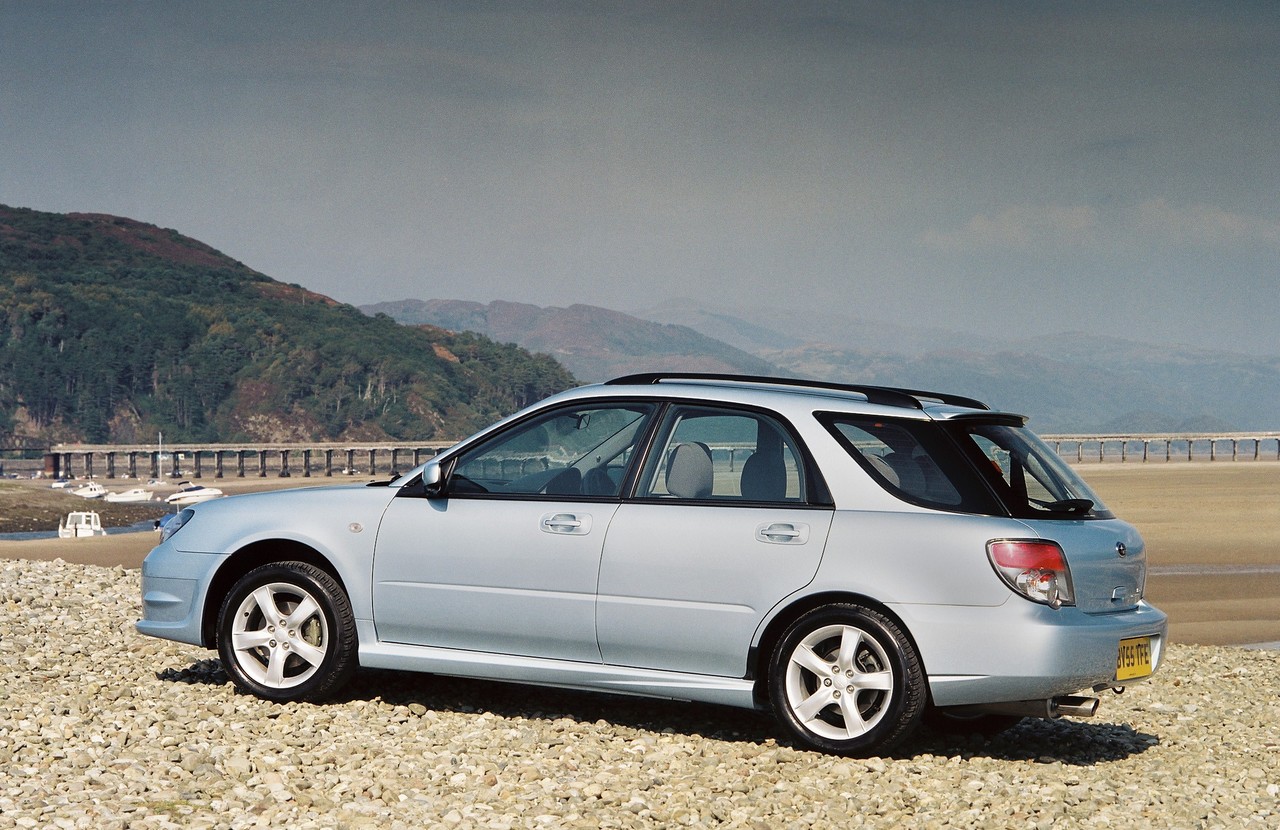
- Comfortable ride
- All-wheel drive traction (via two very different systems)
- Responsive brakes
- Relatively light steering provides good feedback
- Engine noise
- 2.0-litre petrol engine lacks top-end power
- Four-speed automatic transmission hesitant to downshift
- 2.5-litre EJ25 engine susceptible to head gasket failure
- Limited rear seat legroom
- For sedans, stepped boot floor limits practicality
Review: Subaru GD.I/GG.I Impreza (2000-02)
Overview
Released in October 2000, the Subaru GD and GG Impreza range consisted of sedans and wagons, respectively. Manufactured in Ota, Japan, the Subaru GD/GG Impreza range initially consisted of the 2.0i GX and RX variants, with the RV following in May 2001.
EJ201 and EJ251 engines
The 2.0-litre EJ201 engine had an open-deck aluminium alloy cylinder block with cast iron liners, an aluminium alloy cylinder head with cross-flow cooling, a single overhead camshaft per cylinder bank (belt-driven), four valves per cylinder actuated by roller rocker arms, tumble swirl intake ports, multi-point sequential fuel injection and a compression ratio of 10.1:1.
For the Impreza RS, the 2.5-litre EJ251 engine had an open-deck aluminium alloy block with cast iron liners, an aluminium alloy cylinder head, a single overhead camshaft per cylinder bank (belt-driven), four valves per cylinder actuated by shimless buckets, multipoint sequential fuel injection and a compression ratio of 10.1:1.
Dimensions and suspension
Compared to its GC predecessor, the Subaru GD Impreza sedan was 55 mm longer (at 4405 mm), 40 mm wider (1730 mm), 25 mm taller (1440 mm) and had a 5 mm longer wheelbase (2525 mm). Relative to their sedan counterparts, the GG Impreza wagons were 35 mm narrower (at 1695 mm), but 25 mm taller (1465 mm). The GD/GG Imprezas had MacPherson strut front suspension and independent rear suspension with dual links.
October 2001: Impreza update
The Impreza range was updated in October 2001 and expanded with the 2.5i RS. As part of the update, the GD/GG Impreza had strengthened pillars, side sills and doors, stiffer front suspension, upgraded brakes, a window-integrated radio aerial and a temperature display within the instrument cluster.
| Variant | Body | Engine | Trans. | Peak power | Peak torque |
|---|---|---|---|---|---|
| 2.0i GX | Sedan, wagon | 2.0-litre EJ201 petrol F4 | 4sp auto, 5sp man. |
92 kW at 5600 rpm | 184 Nm at 3600 rpm |
| 2.0i RX | Sedan, wagon |
||||
| 2.0i RV | Wagon | ||||
| 2.5i RS | Sedan | 2.5-litre EJ251 petrol F4 | 4sp auto, 5sp man. |
112 kW at 5600 rpm | 223 Nm at 3600 rpm |
AWD systems
The Subaru GD and GG Impreza were available with two different all-wheel drive (AWD) systems according to transmission type:
- Models with manual transmissions were fitted with Subaru’s ‘Continuous’ AWD system which utilised a viscous-coupling locking centre differential. In normal conditions, the system provided a 50:50 front:rear torque distribution. If traction was lost, however, up to 80 per cent of the engine’s torque could be directed to the opposing axle.
- Models with automatic transmissions were fitted with an ‘Active Torque Split’ system which consisted of an electronically-controlled, hydraulic multi-plate transfer clutch (instead of the centre differential). In normal conditions, the system provided an 80:20 front:rear torque split but sensors – measuring wheel slippage, throttle position and braking – could anticipate a loss of front-wheel traction and transfer torque to the rear axle.
Safety equipment
Standard safety equipment for the Subaru GD.I and GG.I Impreza included dual front airbags, ABS and front seatbelts with pretensioners and load limiters. From October 2001, all Imprezas were fitted with electronic brake force distribution.
ANCAP crash testing
In ANCAP crash testing, a 2001 Impreza – fitted with a 2.5-litre engine – received a four star adult occupant protection rating with a score of 27.49. In the offset crash test, protection from serious injury was rated as good for the head and acceptable for the chest and legs. In the side impact test, protection from serious injury for the head, abdomen and pelvis was rated as good, while chest protection was acceptable.
Features: Impreza GX, RV, RX and RS
Standard features for the Impreza 2.0i GX included a four speaker sound system with CD player, cruise control, tilt adjustable steering wheel, front and rear fog lights, remote central locking, power mirrors and windows, a height adjustable driver’s seat and an immobiliser.
Compared to the GX, the Impreza 2.0i RV was distinguished by its 16-inch alloy wheels, two tone paint and flared wheel arches.
Compared to the GX, the Impreza 2.0i RX was further equipped with 15-inch alloy wheels, air conditioning and a Momo steering wheel. Beyond this, the Impreza 2.5i RS added with five-spoke 16-inch alloy wheels and sports body kit.
Review: Subaru GD.II/GG.II Impreza (2002-05)
Overview
Released in December 2002, the Subaru GD and GG Series II (GD.II/GG.II) Impreza introduced significant styling changes along with other minor changes. Visually, the ‘bug eyes’ of the GD/GG Series I were replaced with a redesigned bonnet, headlights and bumpers.
| Variant | Body | Engine | Trans. | Peak power | Peak torque |
|---|---|---|---|---|---|
| 2.0i GX | Sedan, wagon | 2.0-litre EJ201 petrol F4 | 4sp auto, 5sp man. |
92 kW at 5600 rpm | 184 Nm at 3600 rpm |
| 2.0i RX | Sedan, wagon |
||||
| 2.0i RV | Wagon | ||||
| 2.5i RS, 2.5i RS-X |
Sedan, wagon | 2.5-litre EJ251 petrol F4 | 4sp auto, 5sp man. |
112 kW at 5600 rpm | 223 Nm at 3600 rpm |
Safety equipment
Compared to their GD.I/GG.I predecessors, standard safety equipment for the GD.II/GG.II Impreza 2.0i GX, RX and RV variants was improved with the addition of active front seat head restraints, which reduced whiplash and the severity of neck injury. Furthermore, all Imprezas were fitted with energy-absorbing brake pedals.
Features
Changes to standard features were limited – the RX variant received a leather-wrapped Momo steering wheel, while the RV was fitted with ‘semi-automatic’ air conditioning.
Released in 2005, the 2.5i RS-X was based on the 2.5i RS but distinguished by its 17-inch alloy wheels and four-piston front and two-piston rear disc brakes (as fitted to the Impreza WRX).
August 2004: Impreza update
The Impreza was updated in August 2004. The braking and ABS systems were upgraded across the range, while the 2.0i GX was fitted with air conditioning. The 2.0i RX, however, was discontinued.
Review: Subaru GD.III/GG.III Impreza (2005-07)
Overview
Released in August 2005, the GD/GG Series III Impreza range introduced a revised range, improved safety equipment and new engines. The entry-level 2.0i GX was effectively replaced by the 2.0i, while the 2.5i RS made way for the 2.0R which was powered by Subaru’s EJ204 engine .
The Subaru GD.II and GG.III Impreza could be identified by their three-piece grilles and extended bonnets.
EJ204 engine
For the GD/GG Impreza, the EJ204 engine had an open-deck aluminium alloy cylinder block, an aluminium alloy cylinder head with cross-flow cooling, double overhead camshafts per cylinder bank (belt-driven), four valves per cylinder actuated by roller rocker arms, Subaru’s ‘Active Valve Control System’ (AVCS) which provided variable intake valve timing, and a compression ratio of 10.0:1.
| Variant | Body | Engine | Trans. | Peak power | Peak torque |
|---|---|---|---|---|---|
| 2.0i | Sedan, wagon | 2.0-litre EJ201 petrol F4 | 4sp auto, 5sp man. |
92 kW at 5600 rpm | 184 Nm at 3600 rpm |
| 2.0i RV | Wagon | ||||
| 2.0i RS | Sedan | ||||
| 2.0R | Sedan, wagon | 2.0-litre EJ204 petrol F4 | 4sp auto, 5sp man. |
118 kW at 6400 rpm | 186 Nm at 3200 rpm |
Safety equipment
For the GD.III/GG.III Impreza, standard safety equipment improved with all Impreza variants fitted with front side airbags. The front seat cushions were also redesigned to minimise submarining in the event of a collision.
Features
Standard features were relatively unchanged; the Impreza 2.0R was distinguished by its 16-inch five-spoke alloy wheels.
Related links
